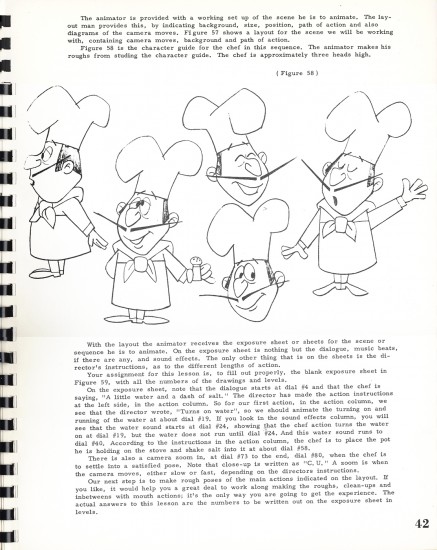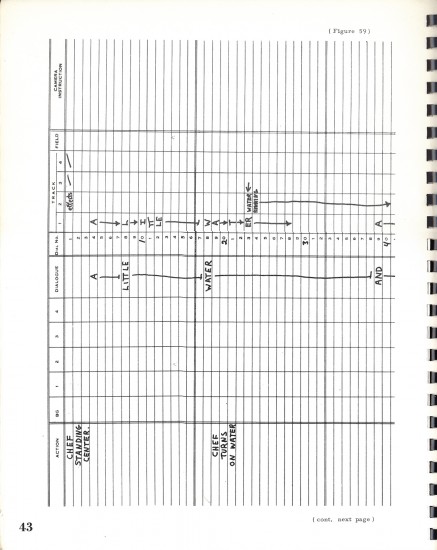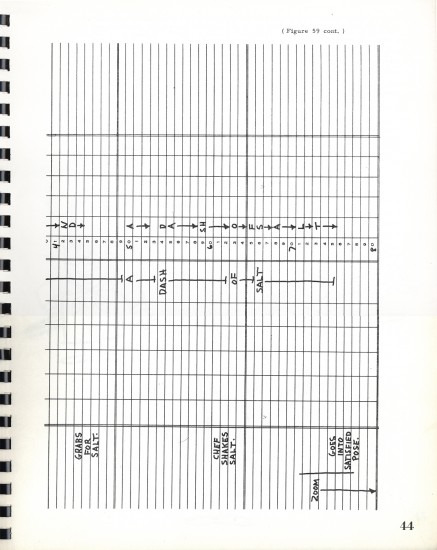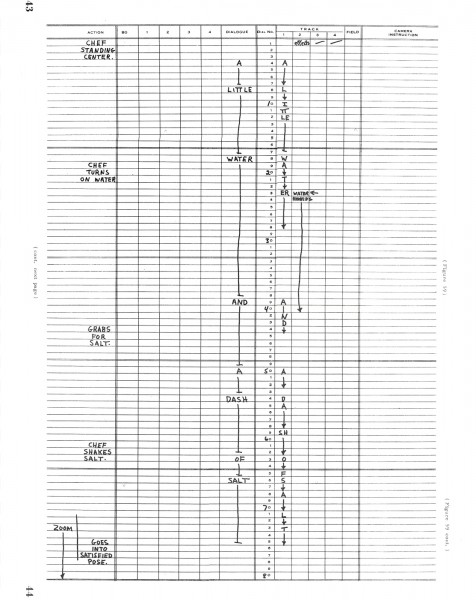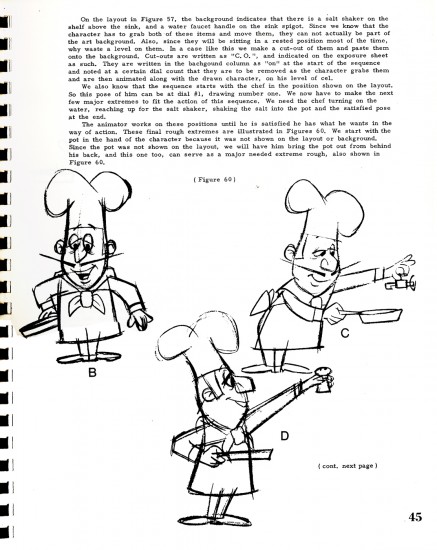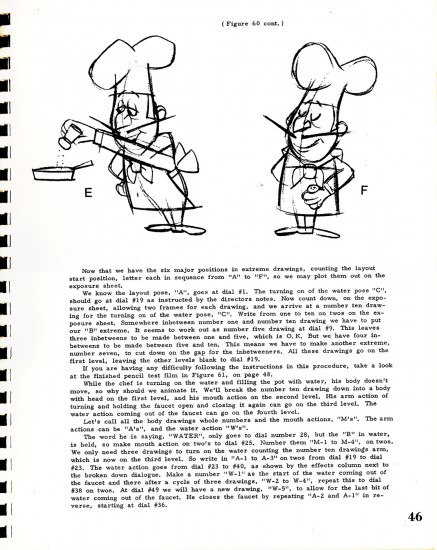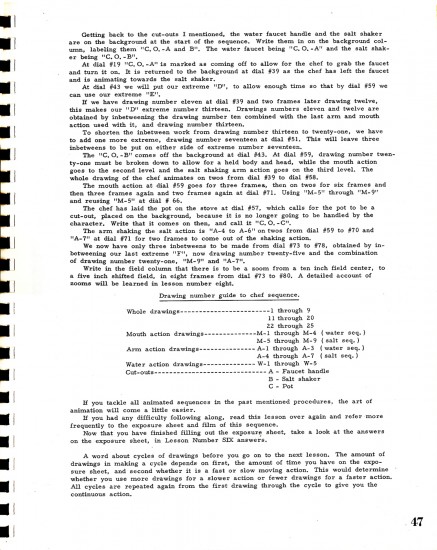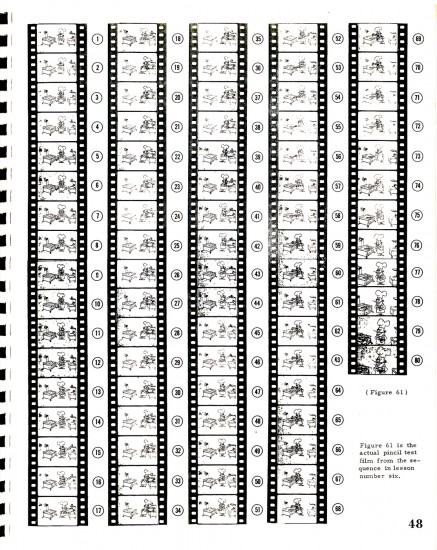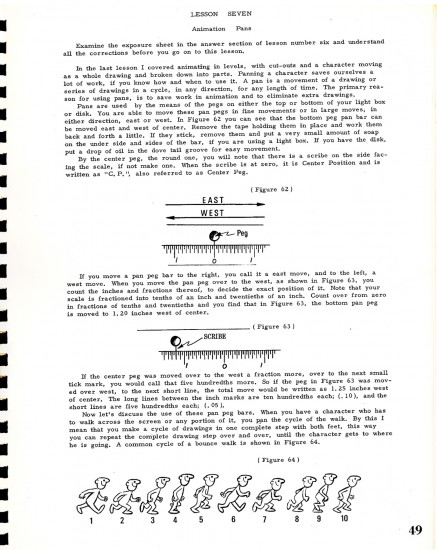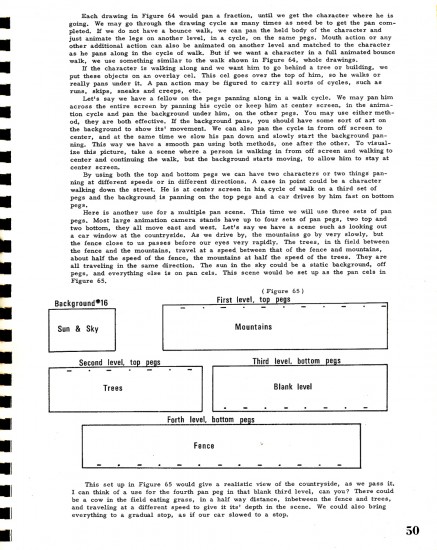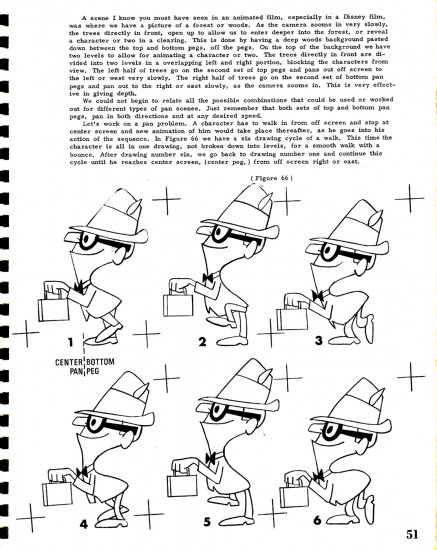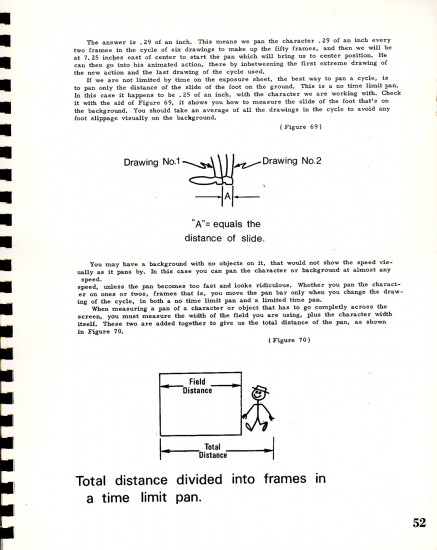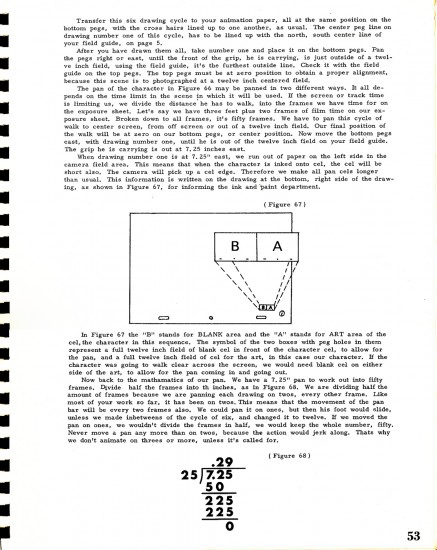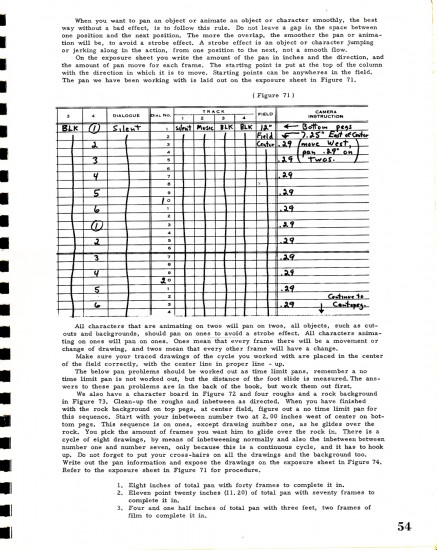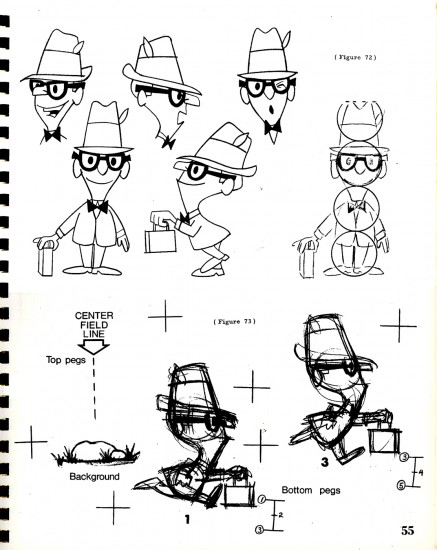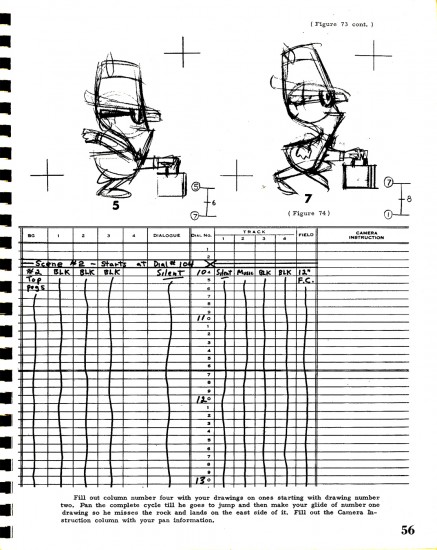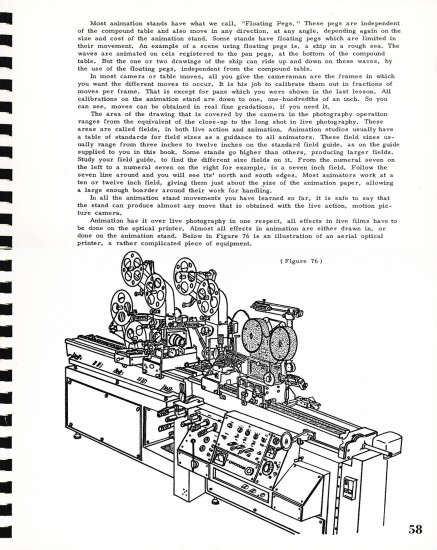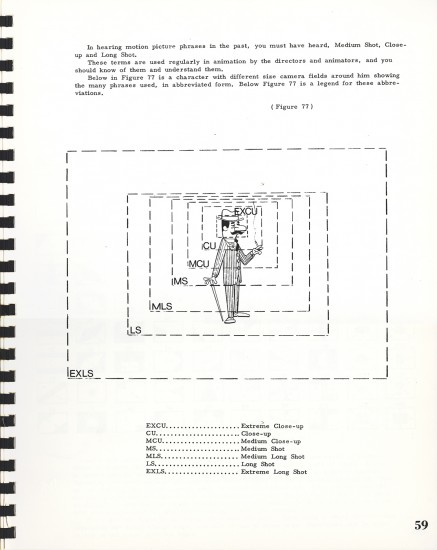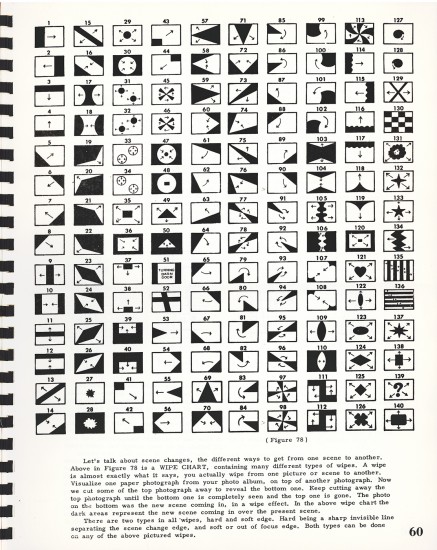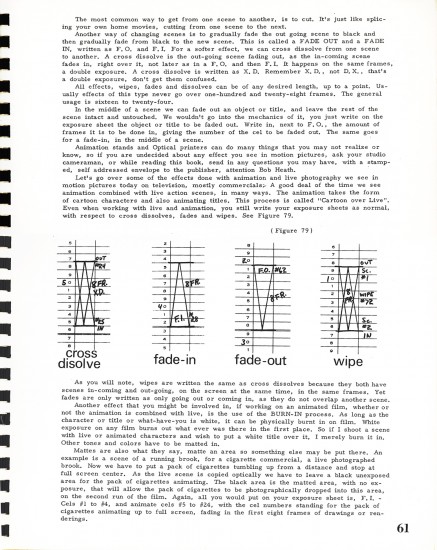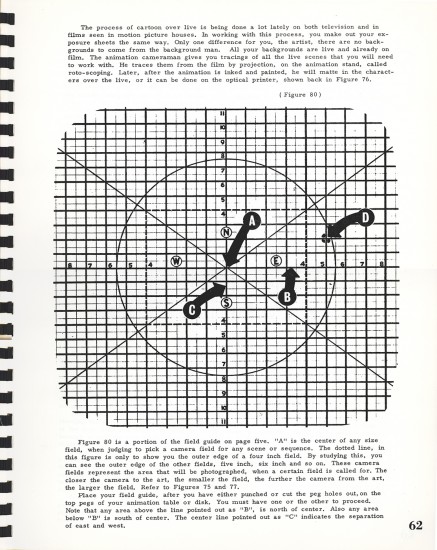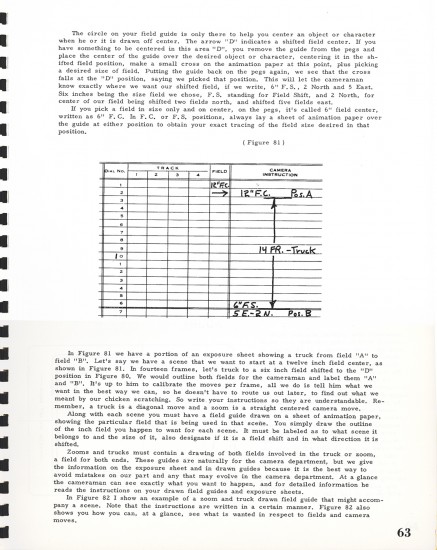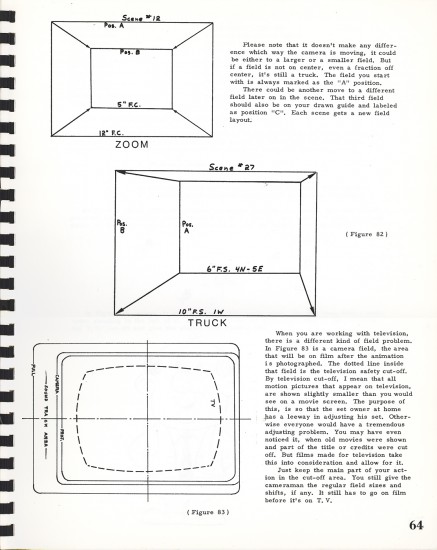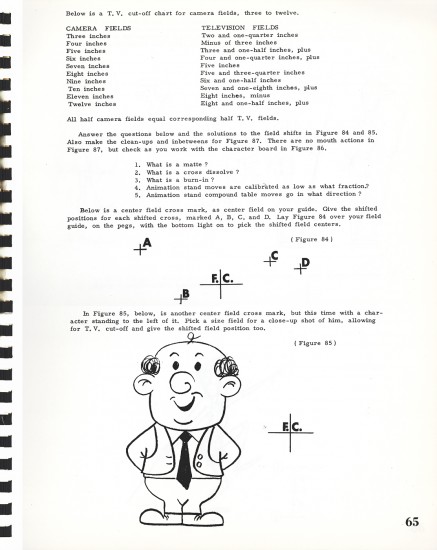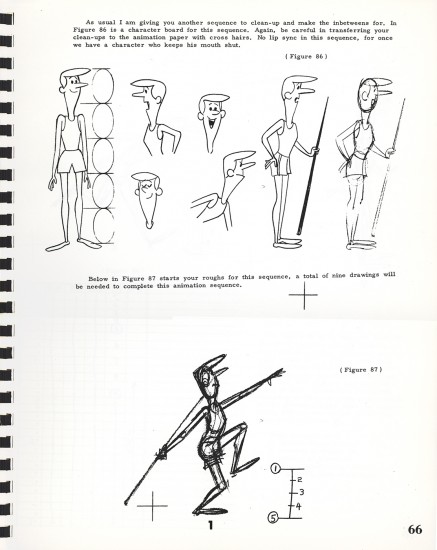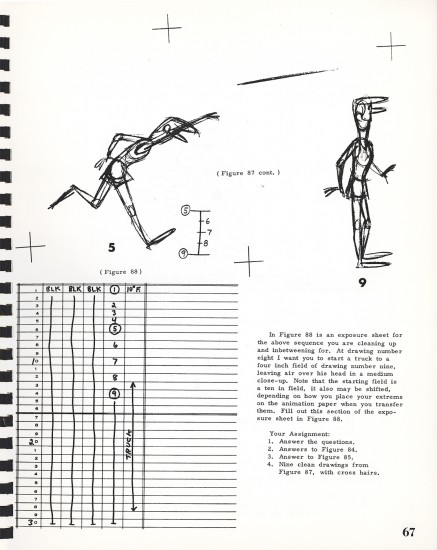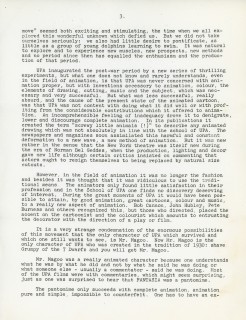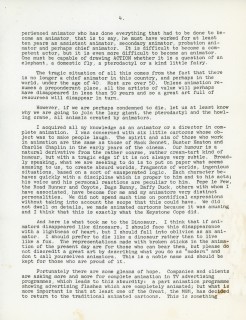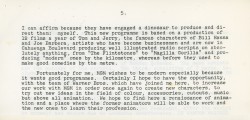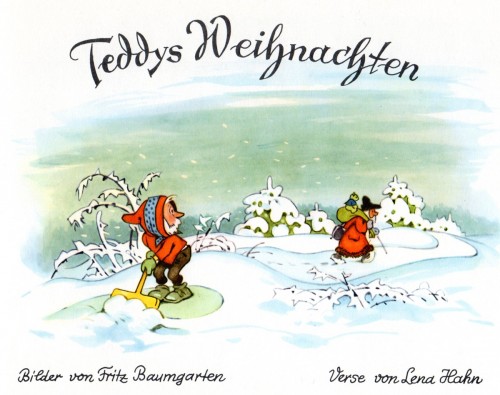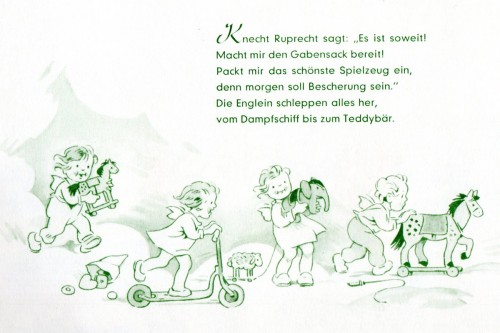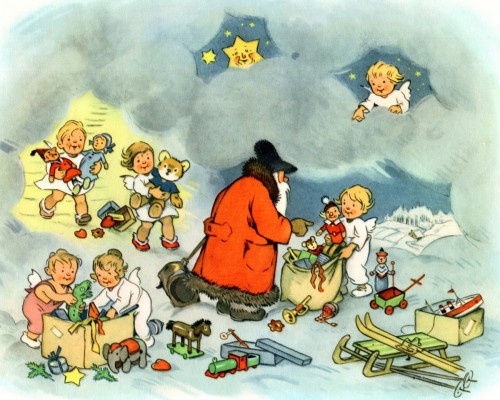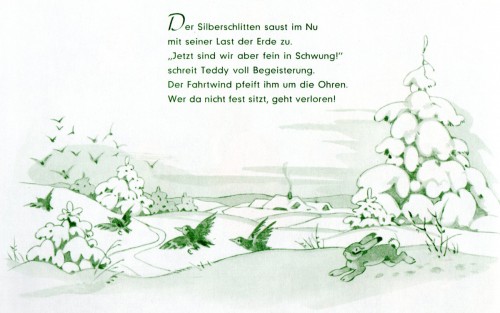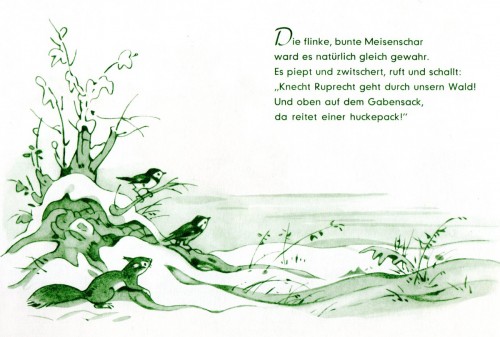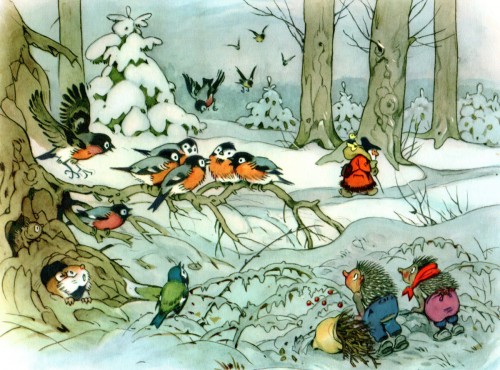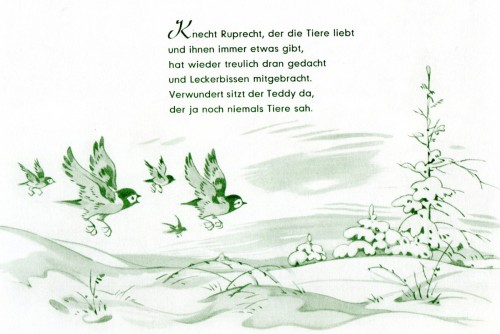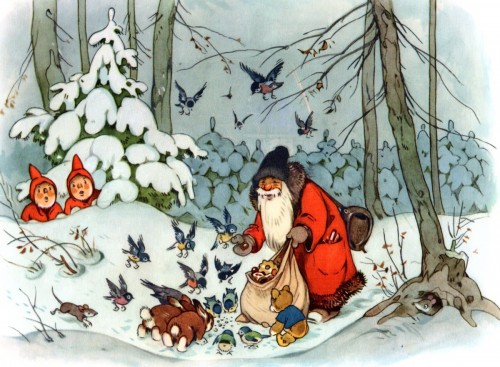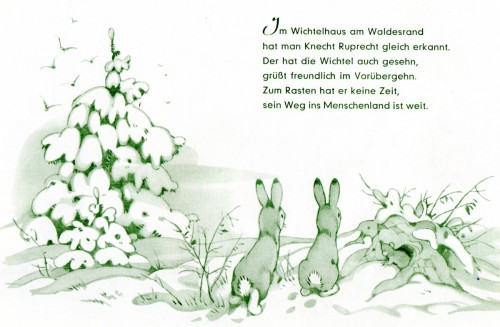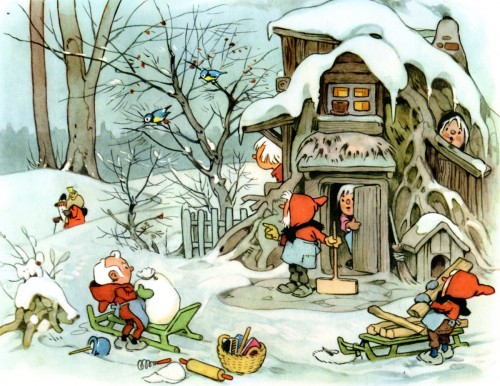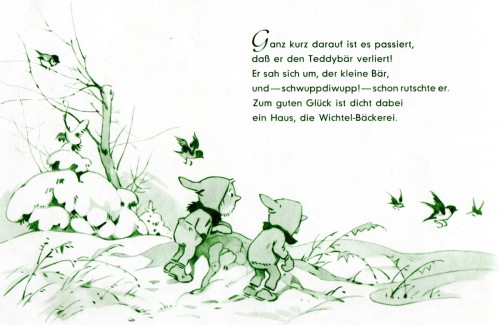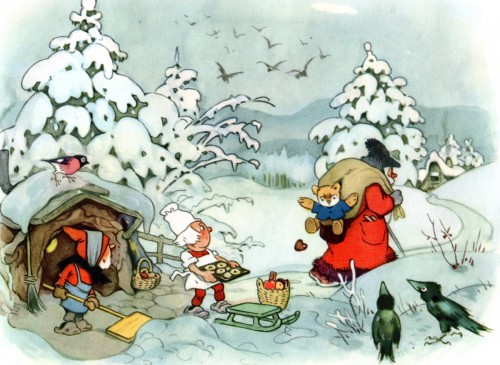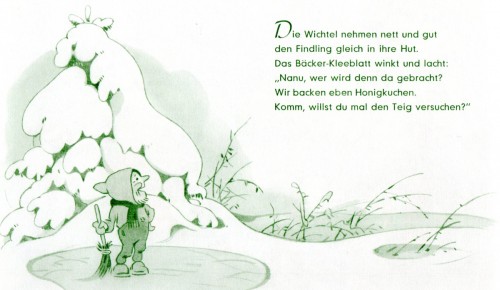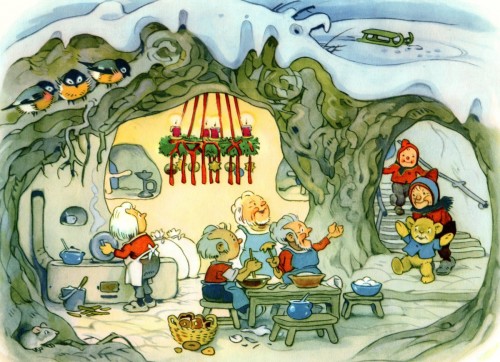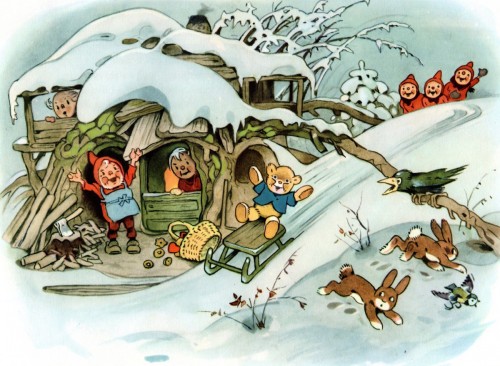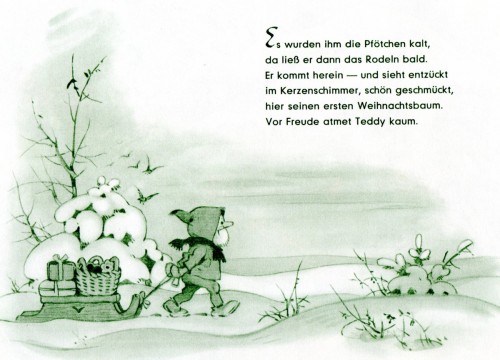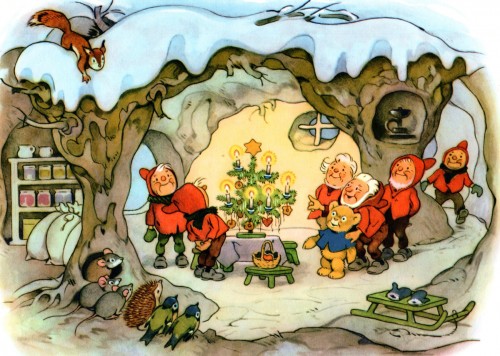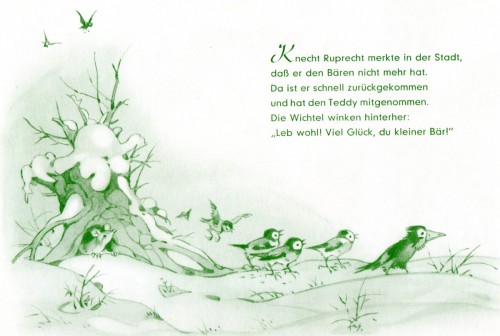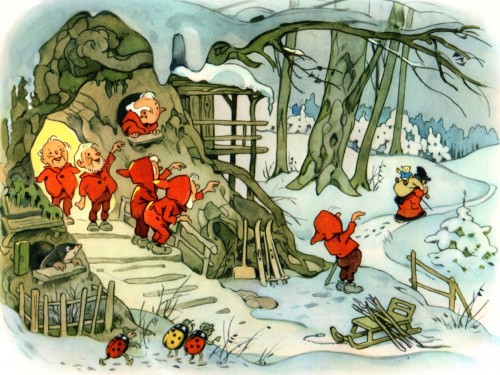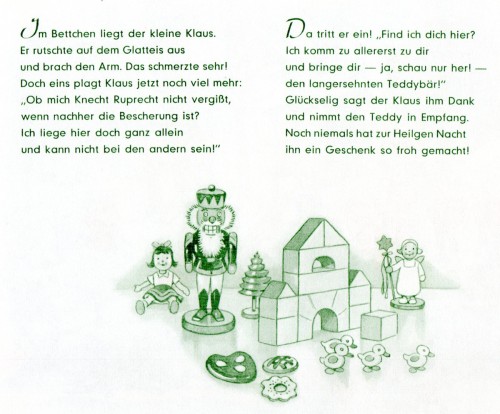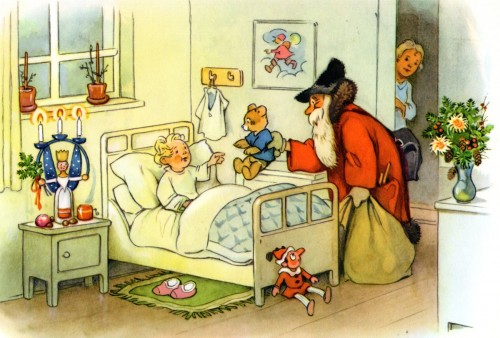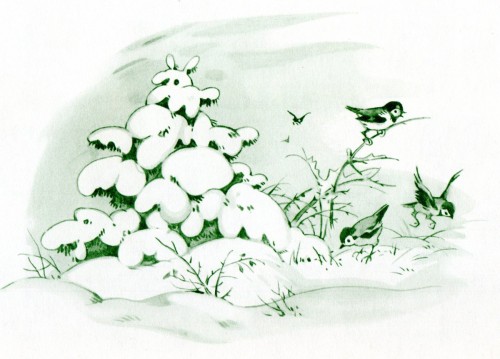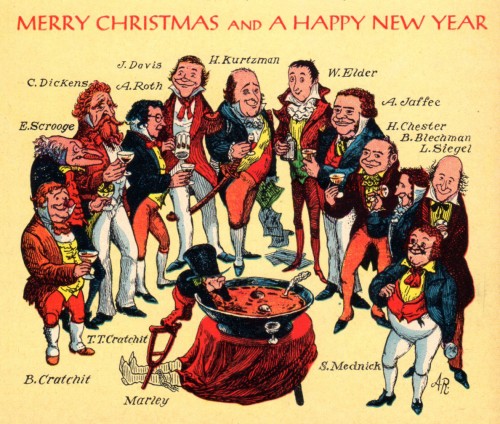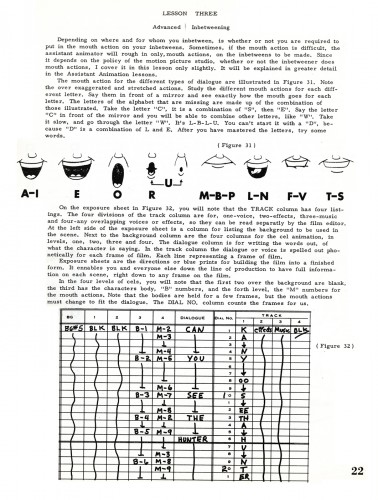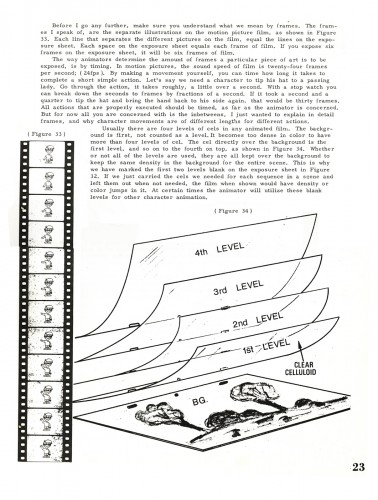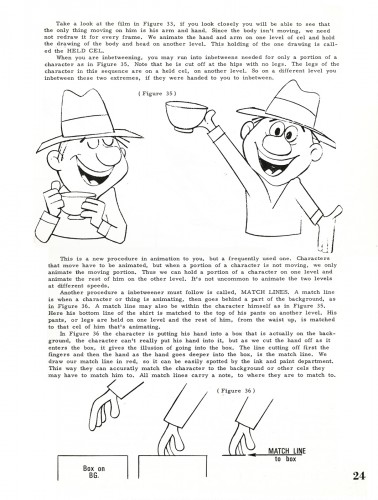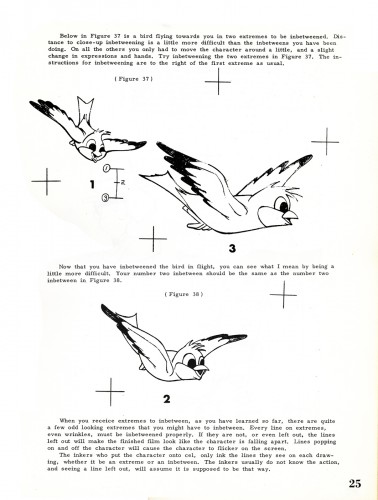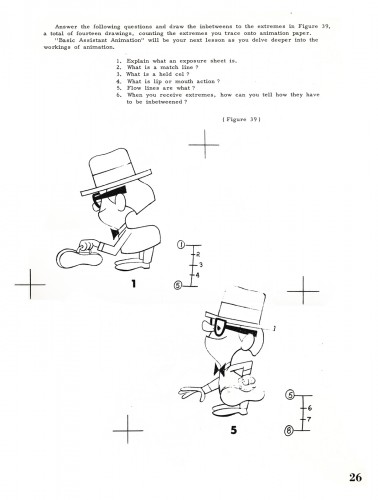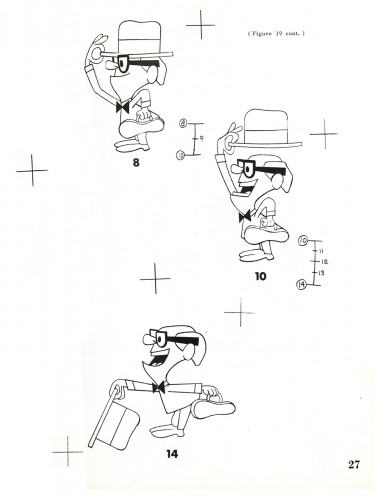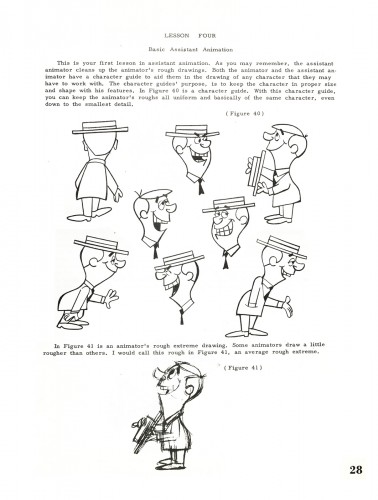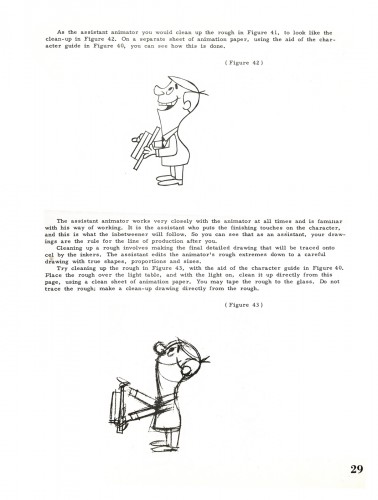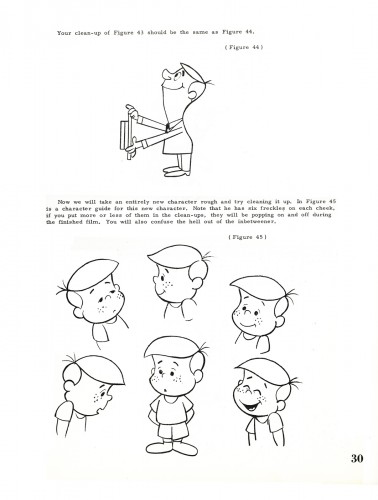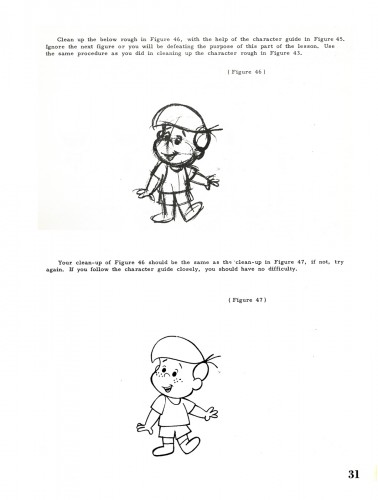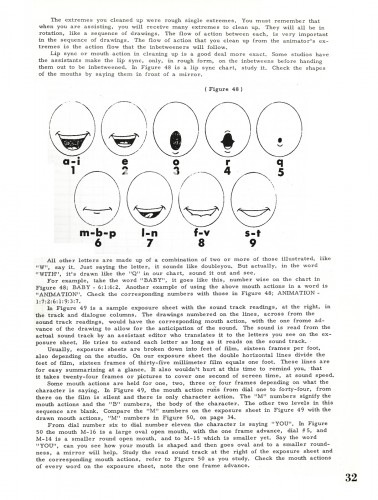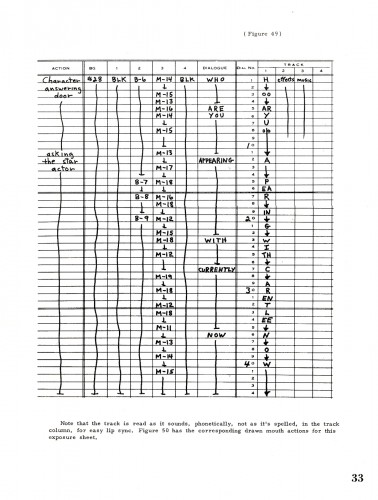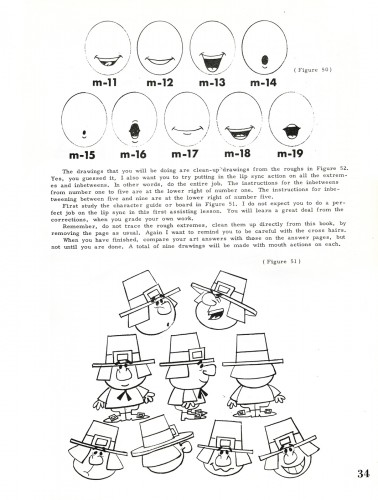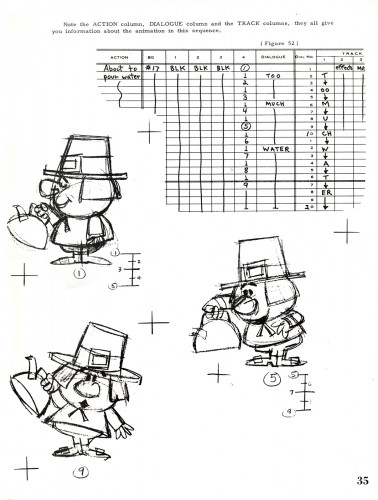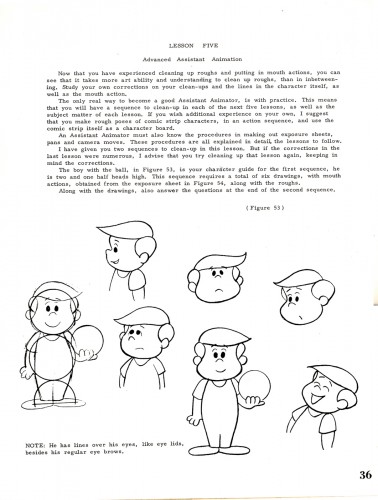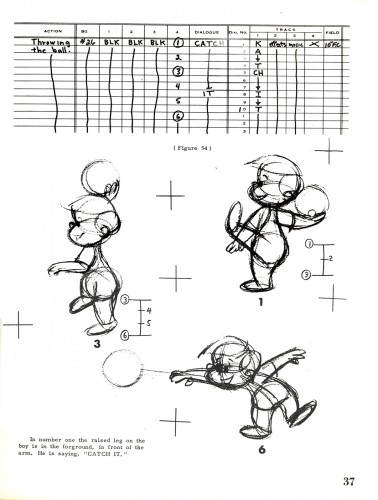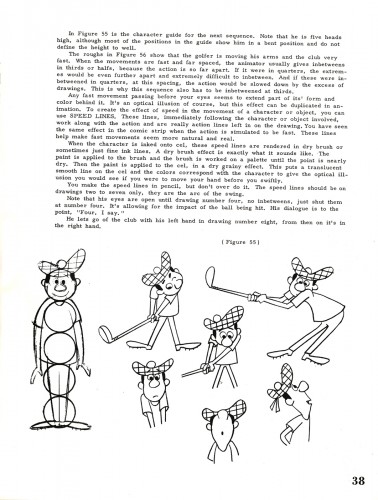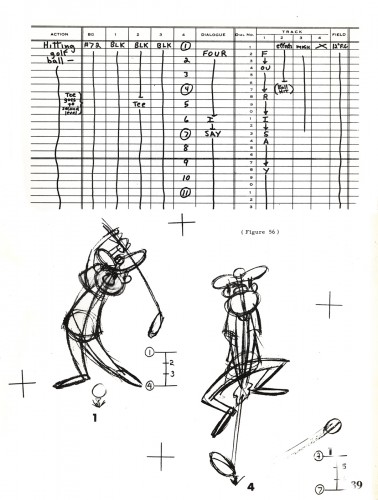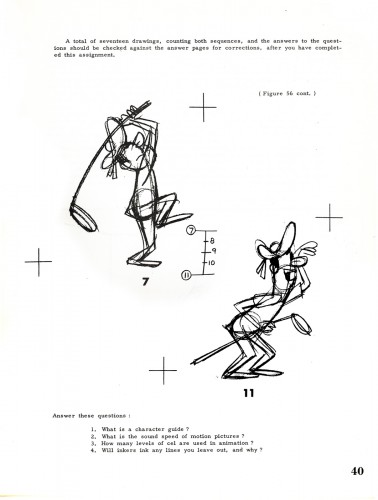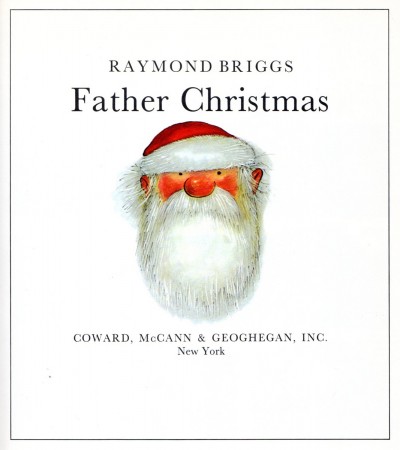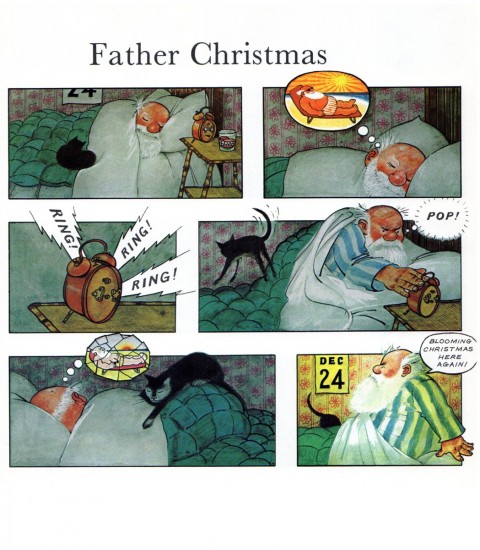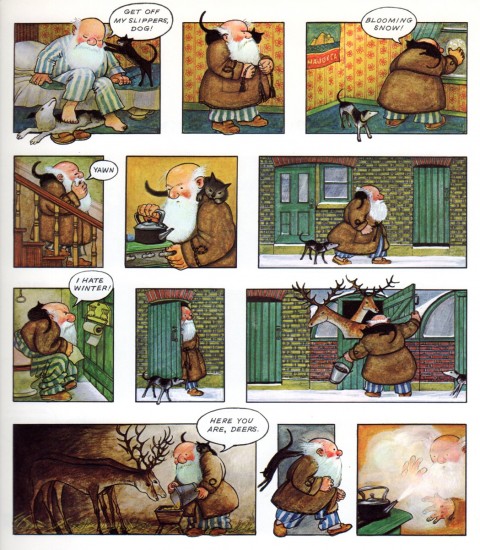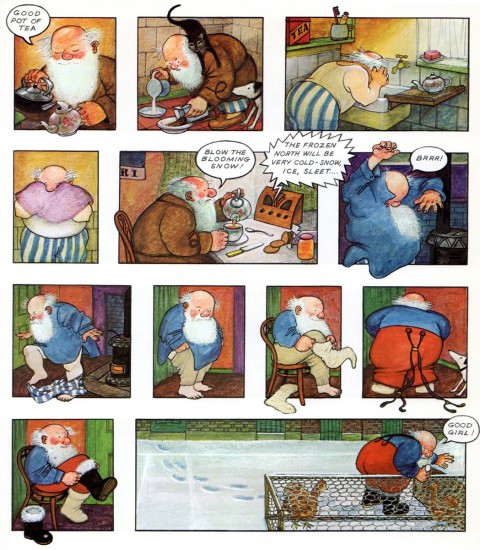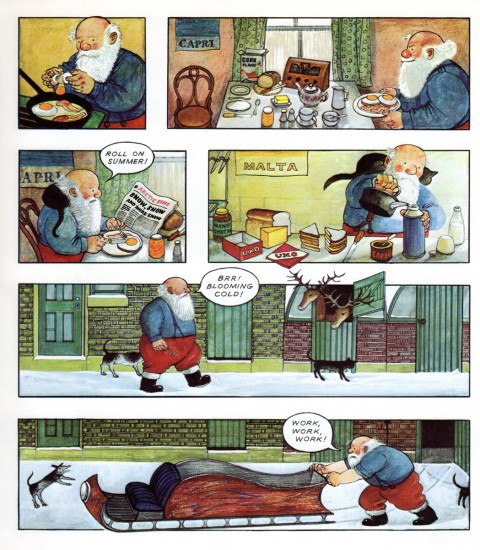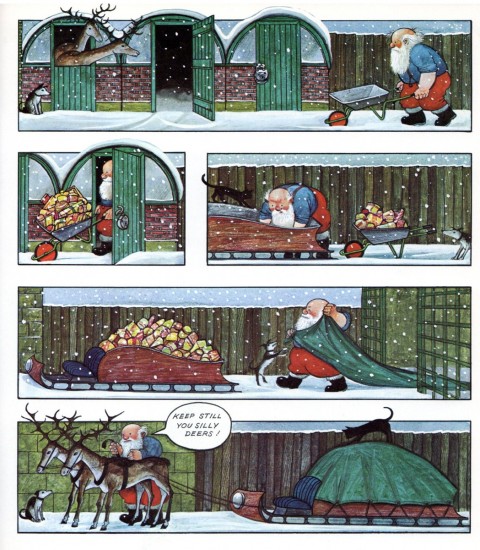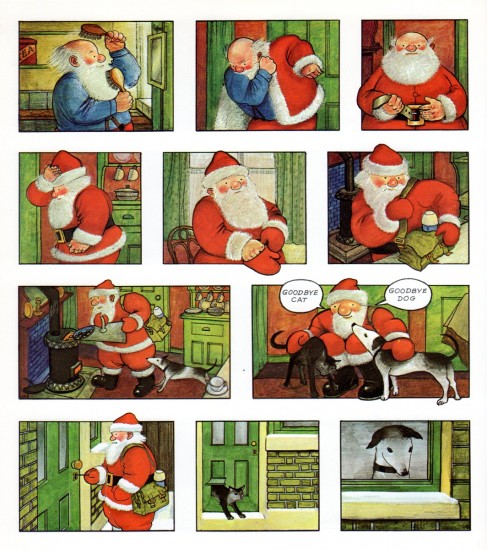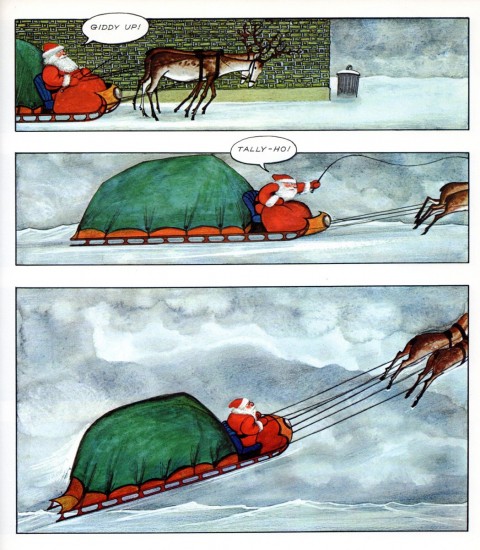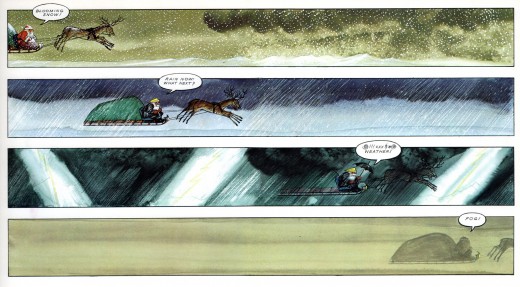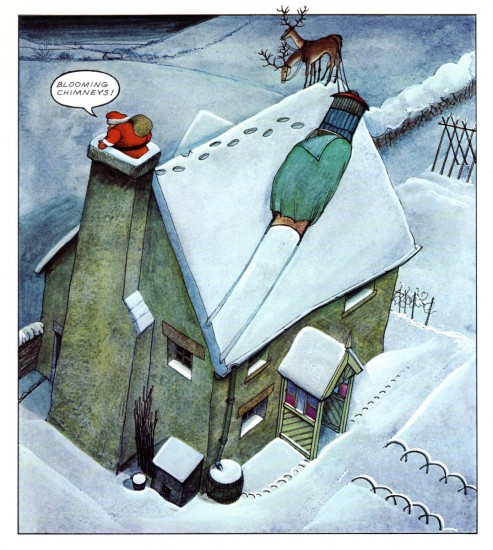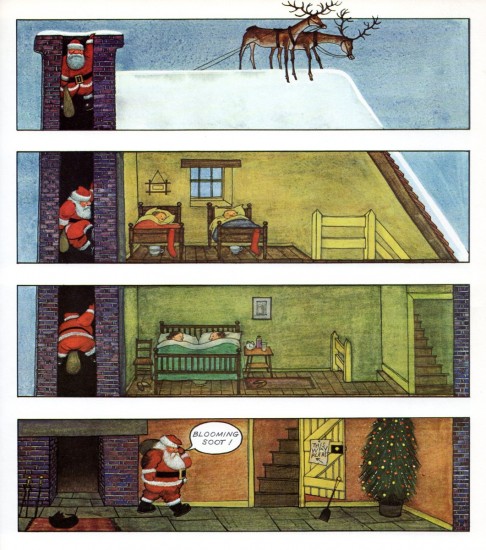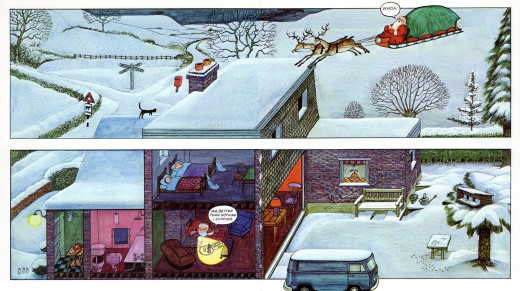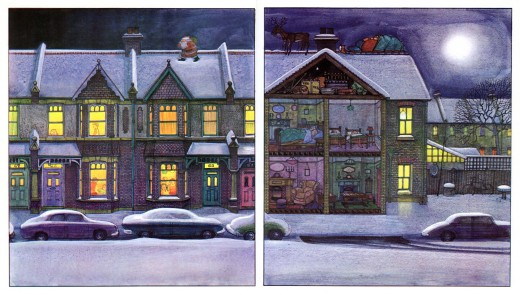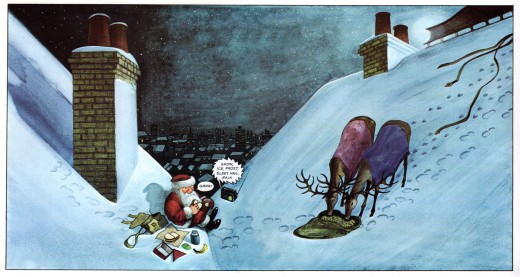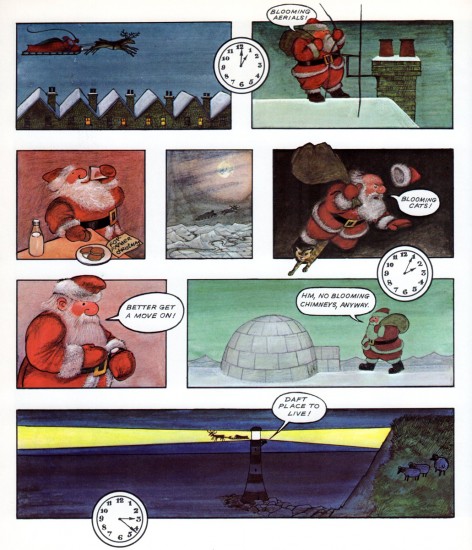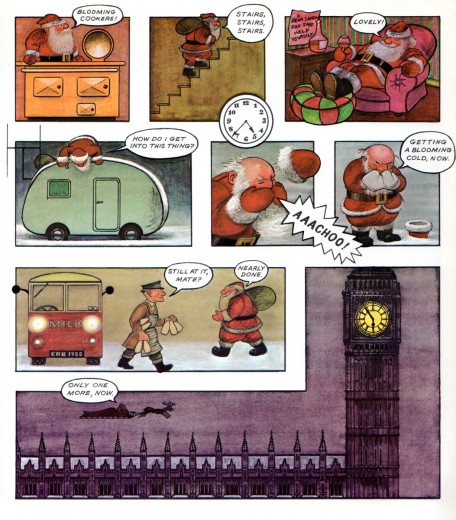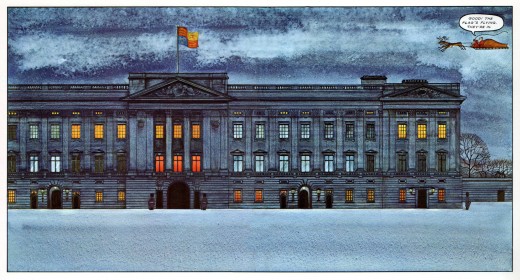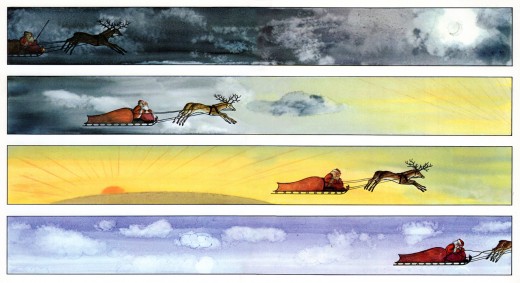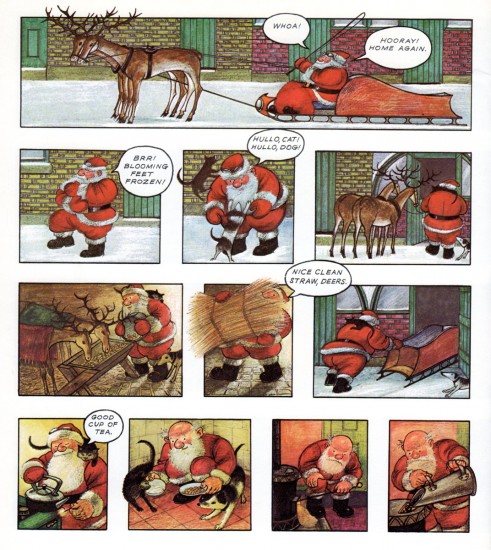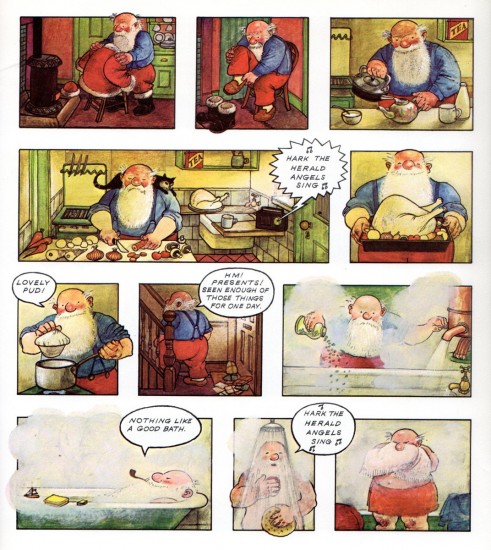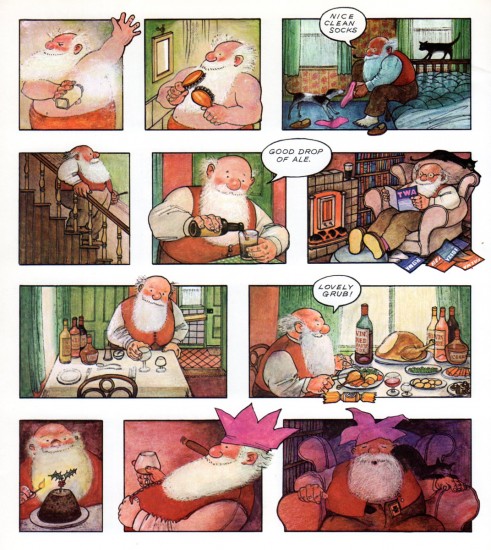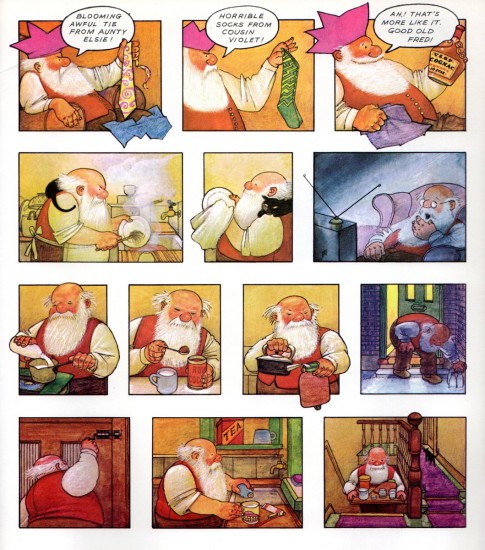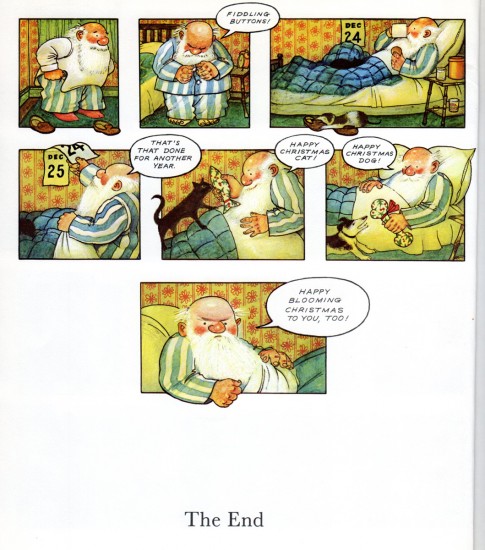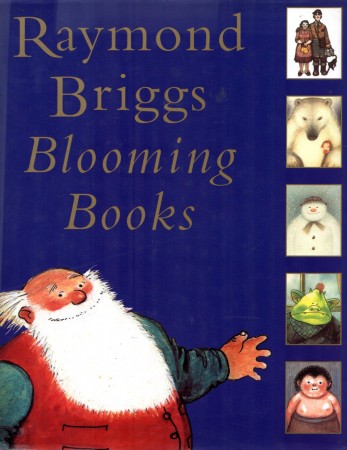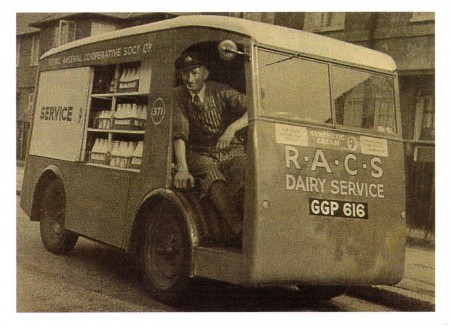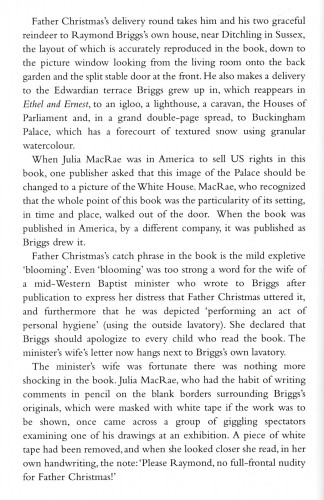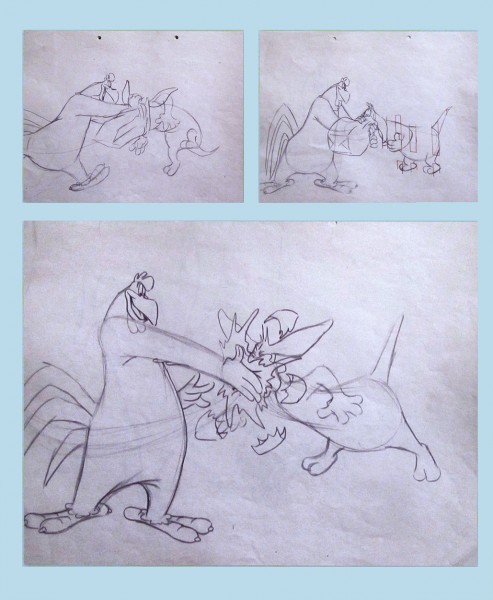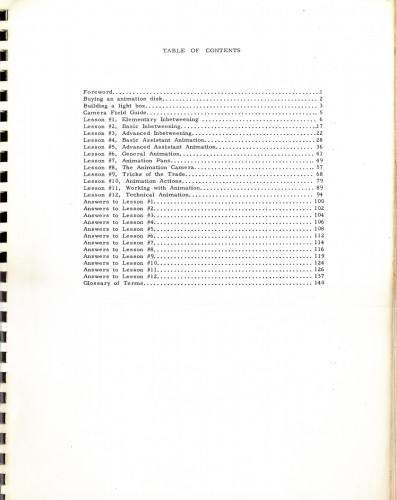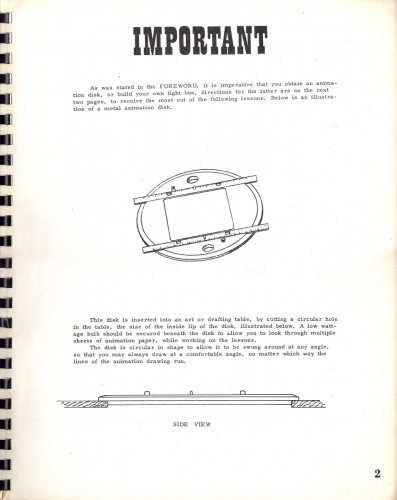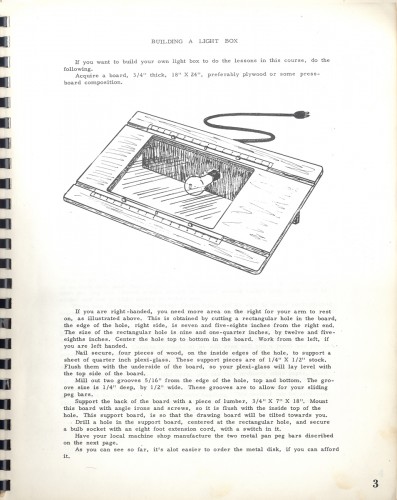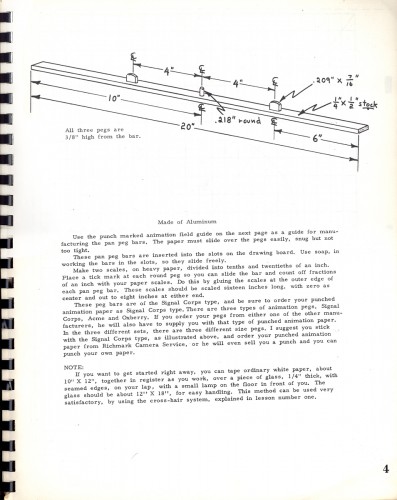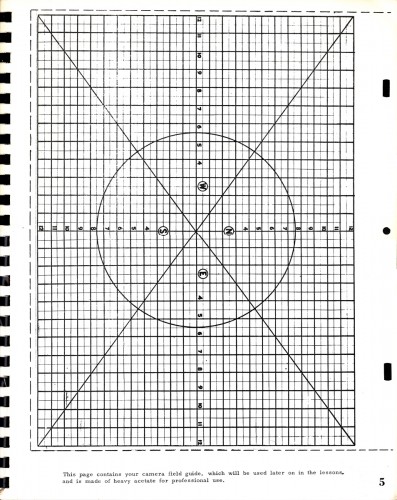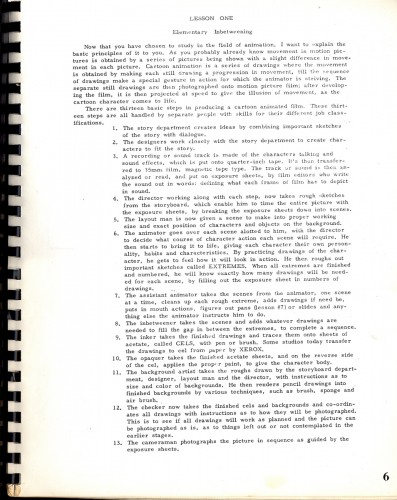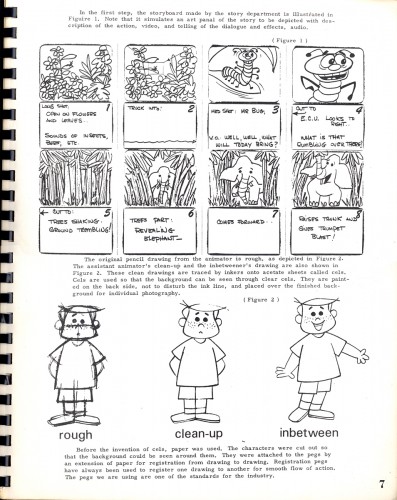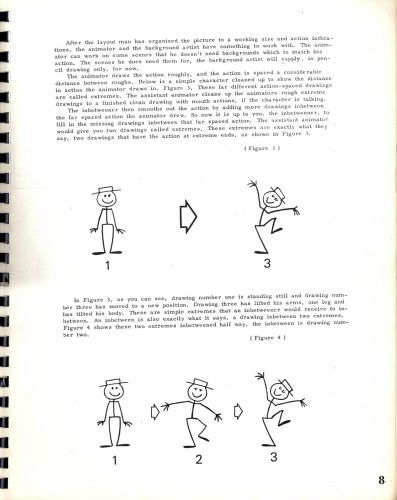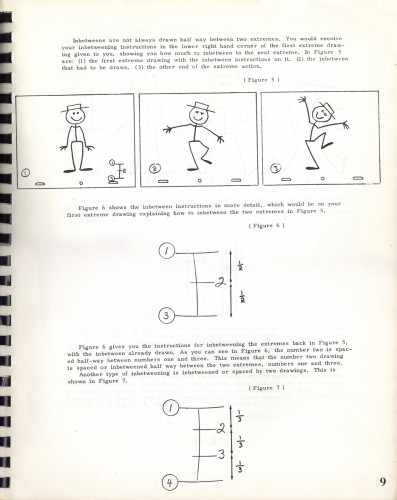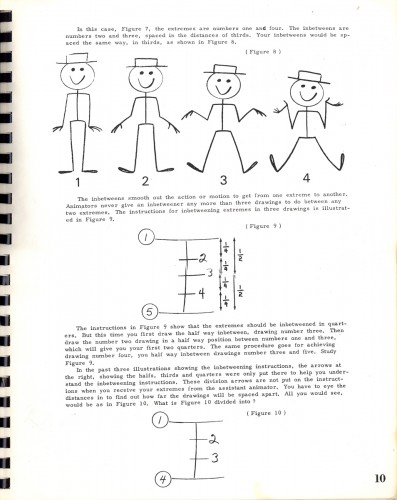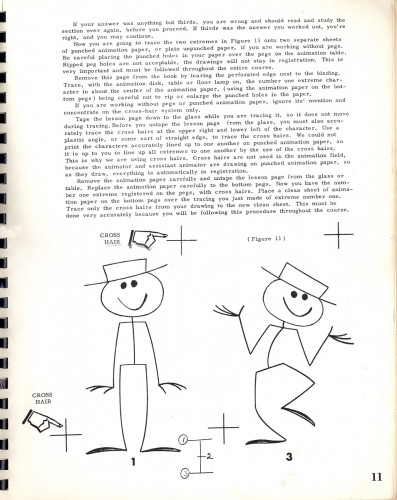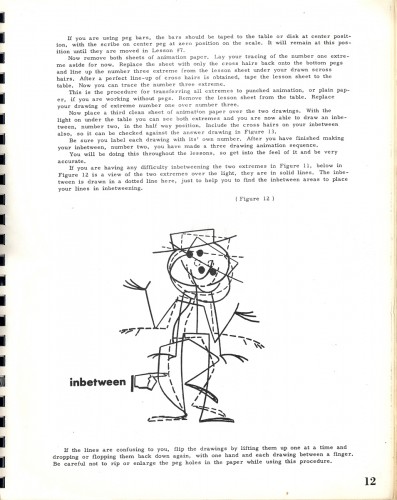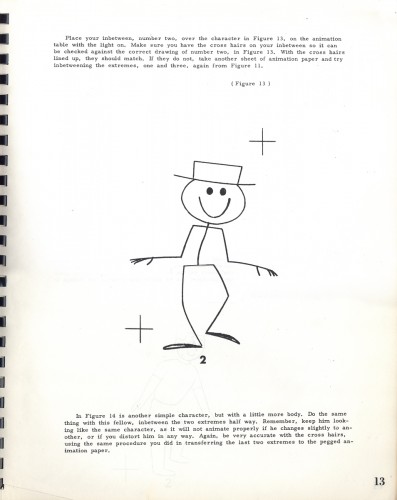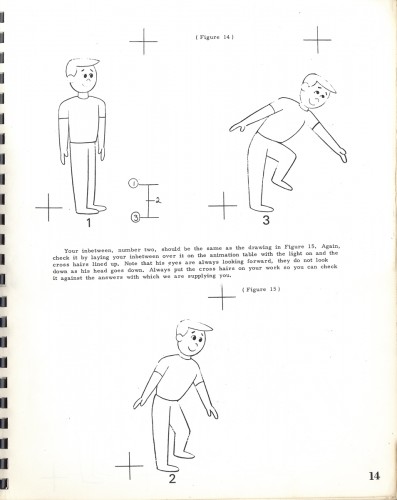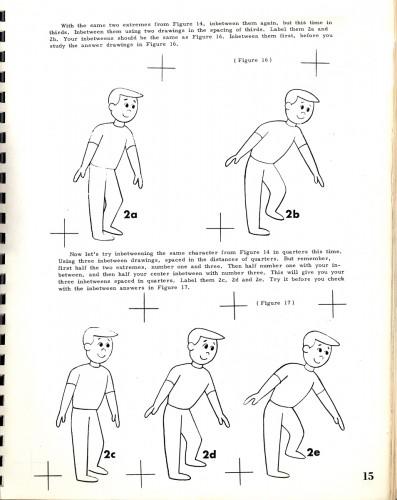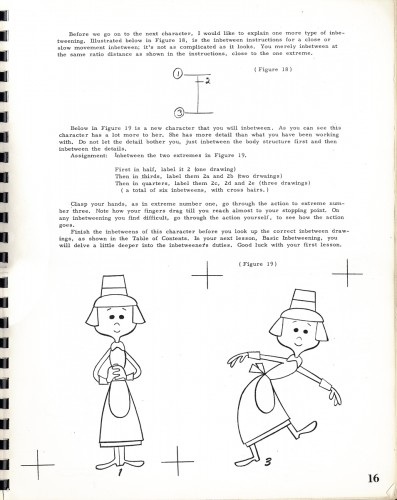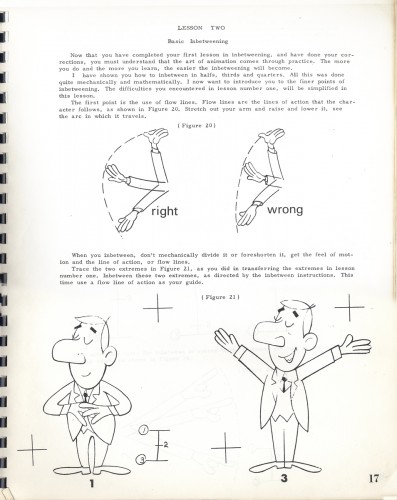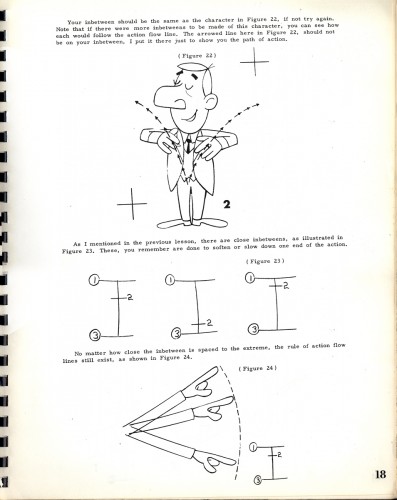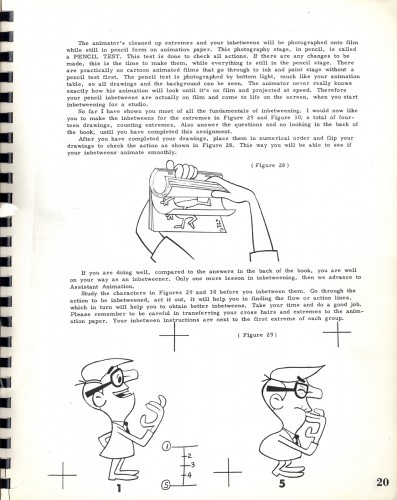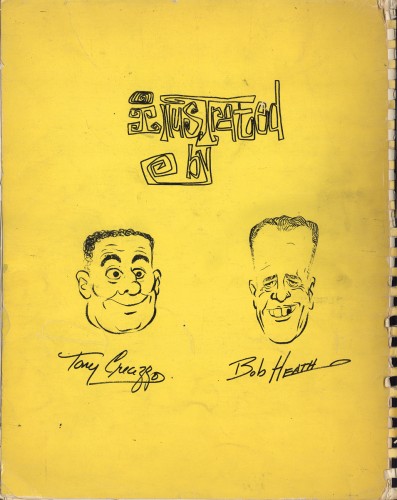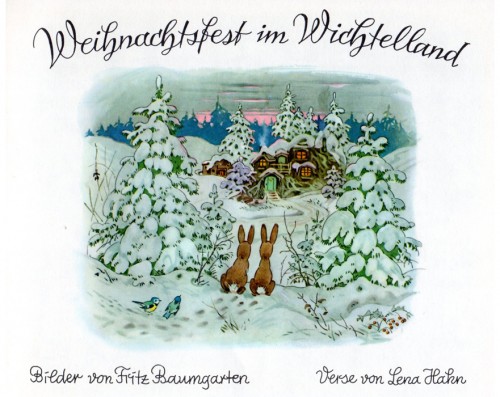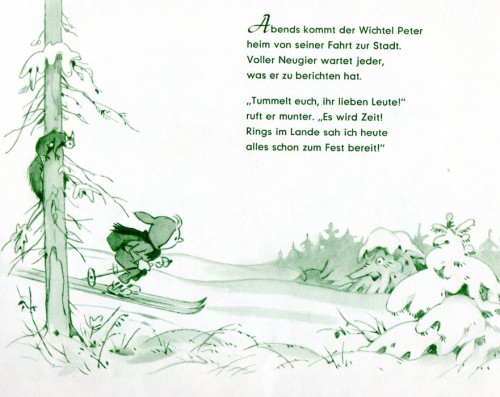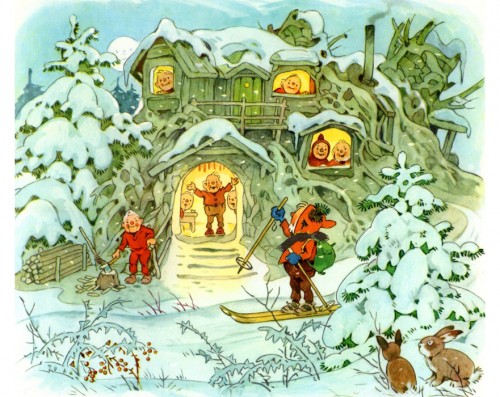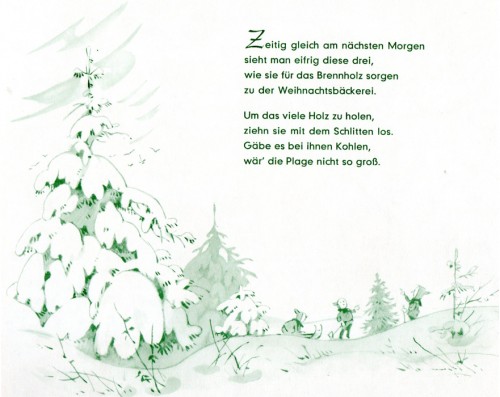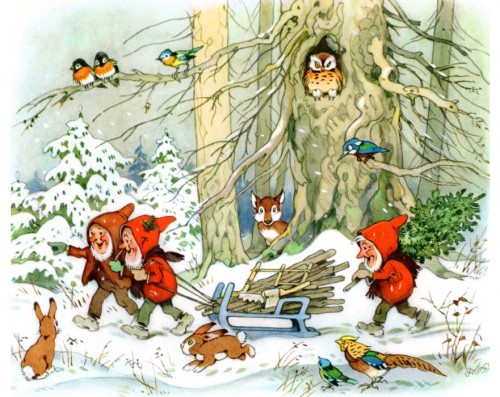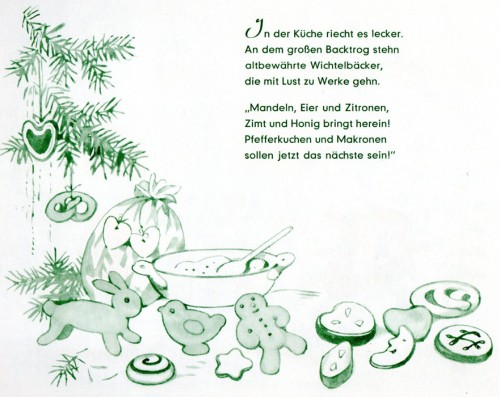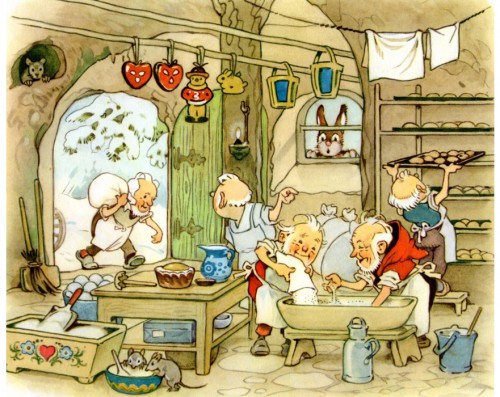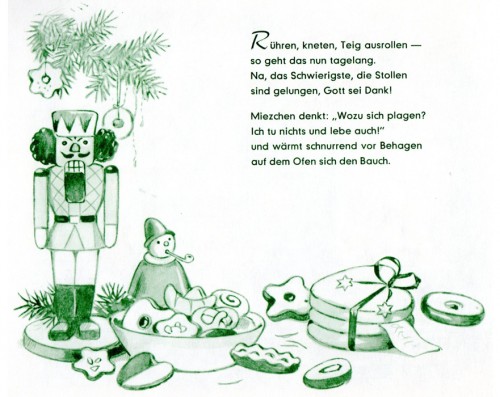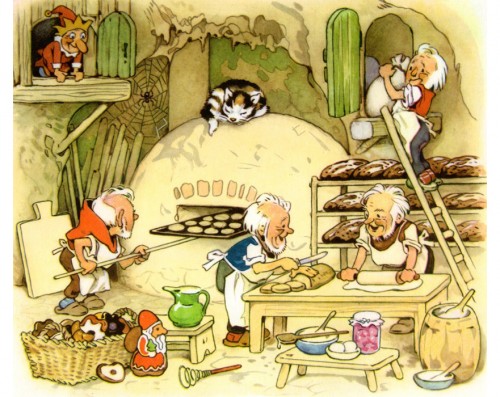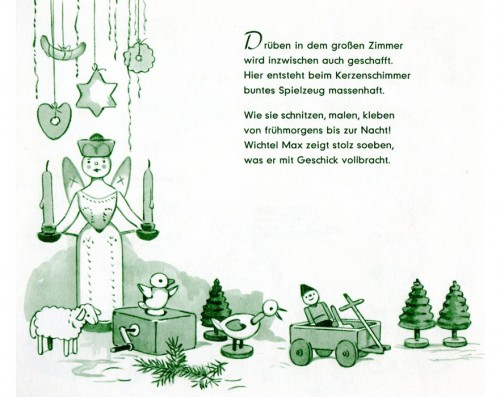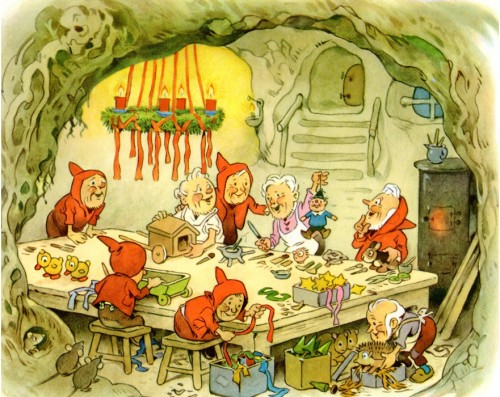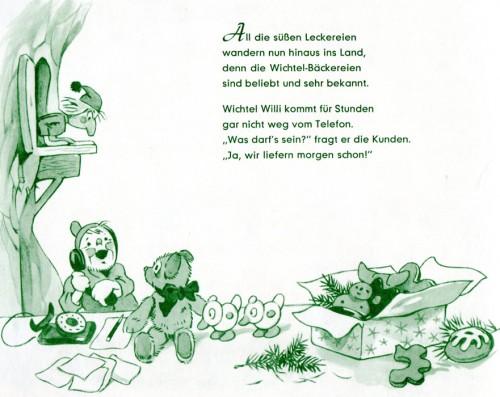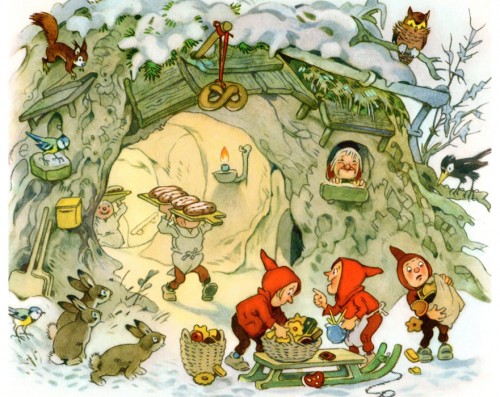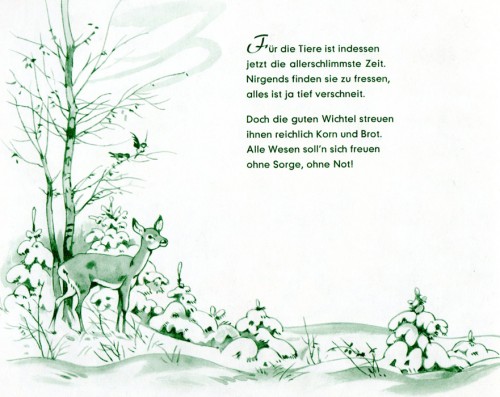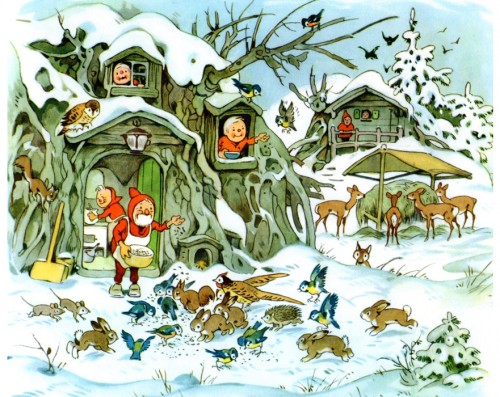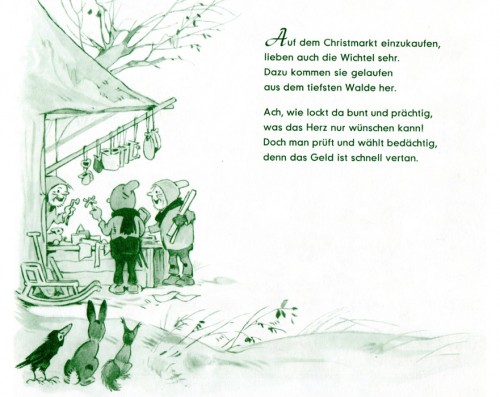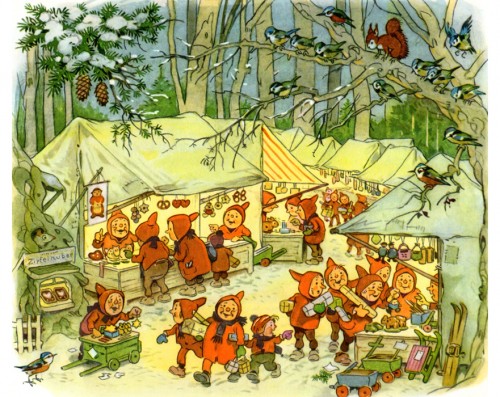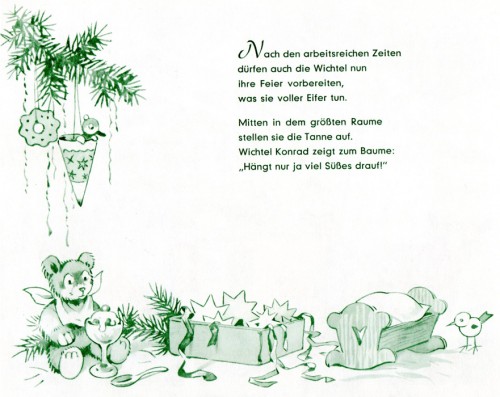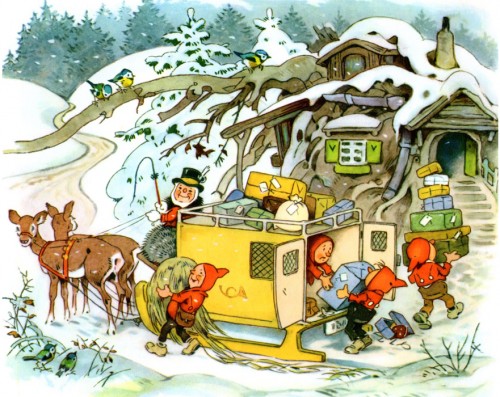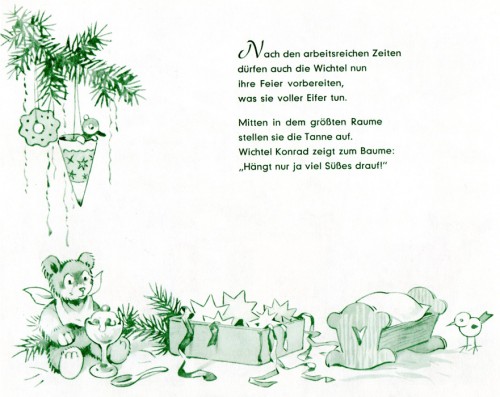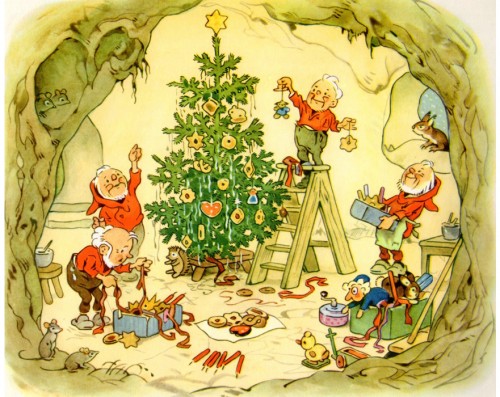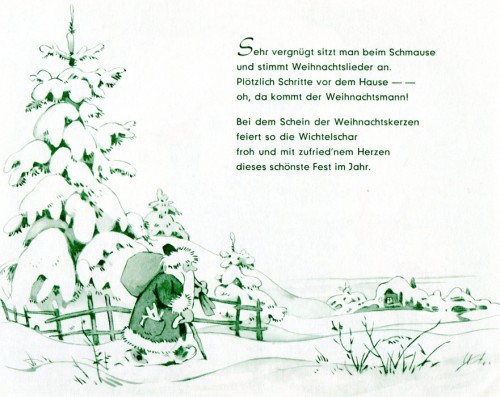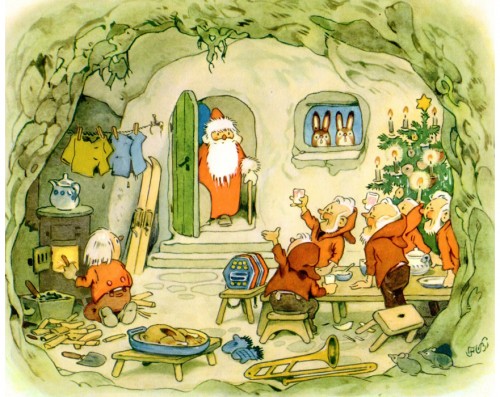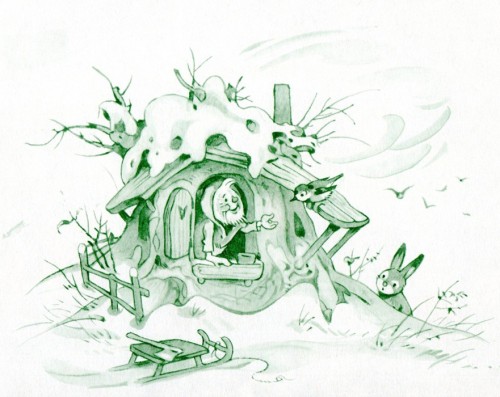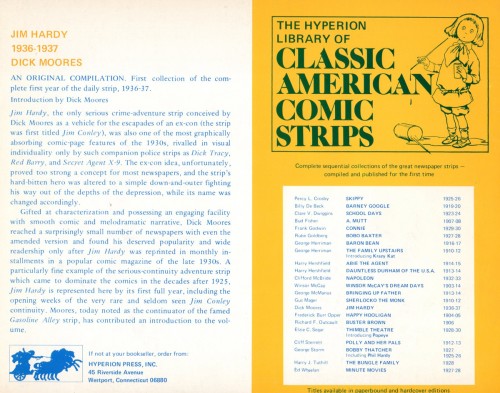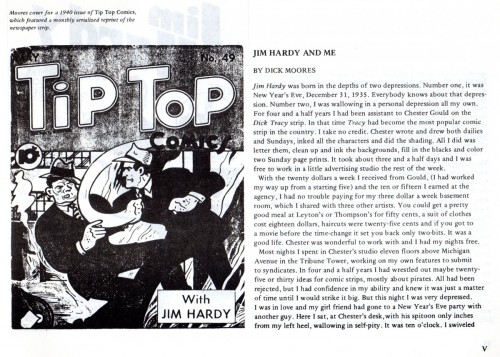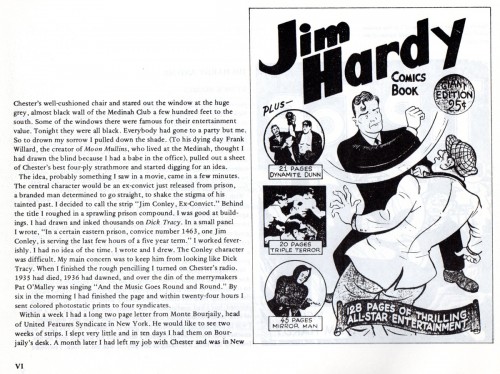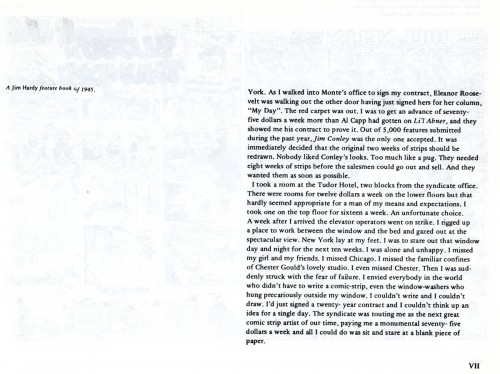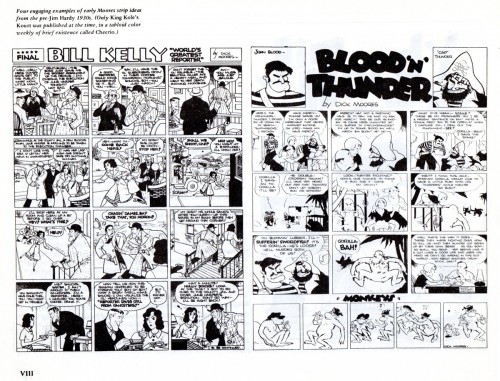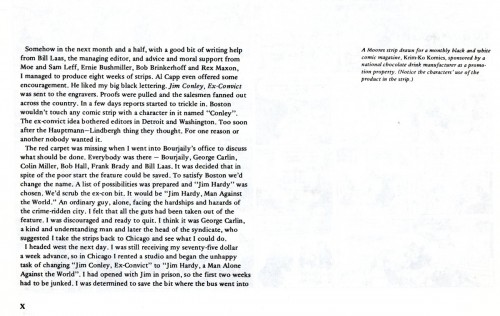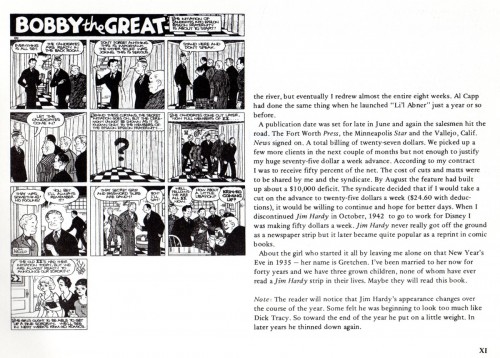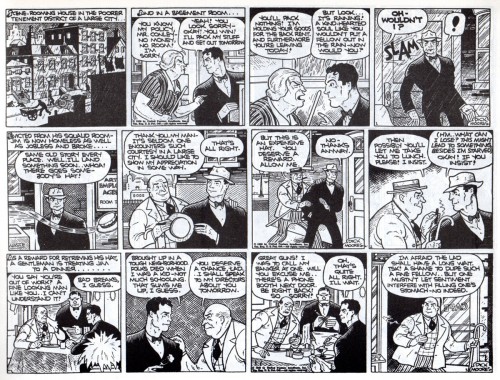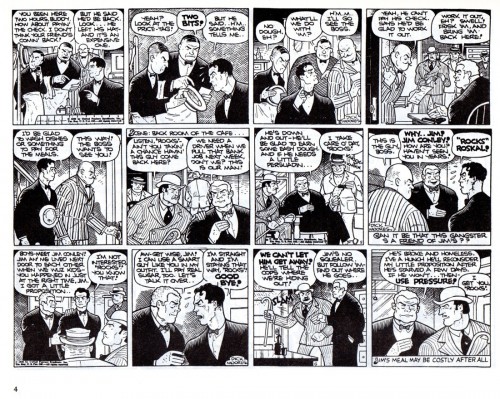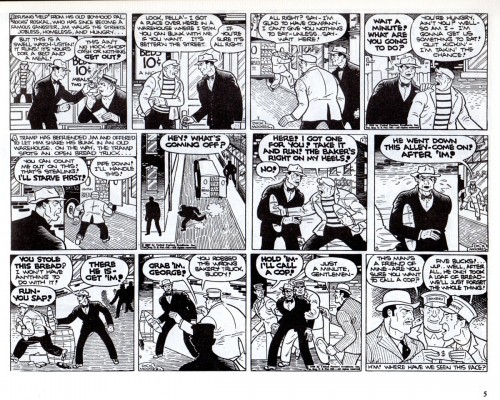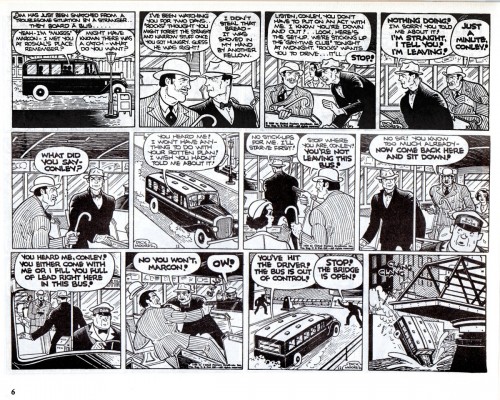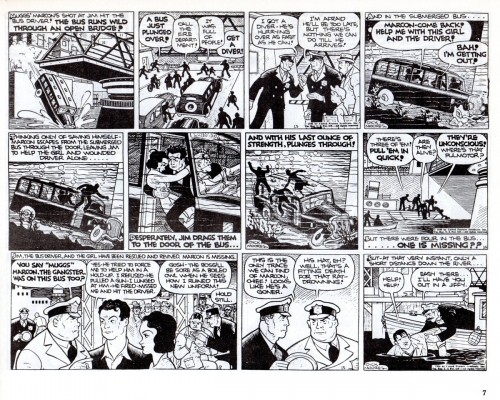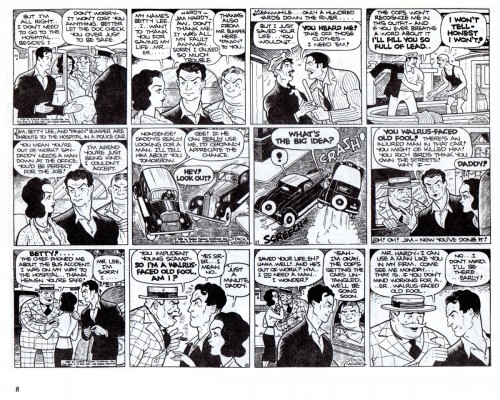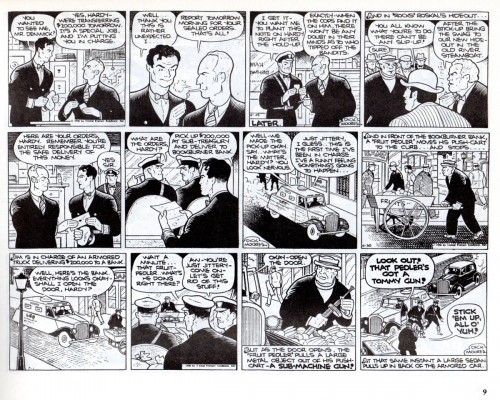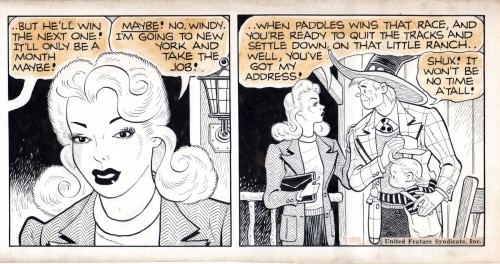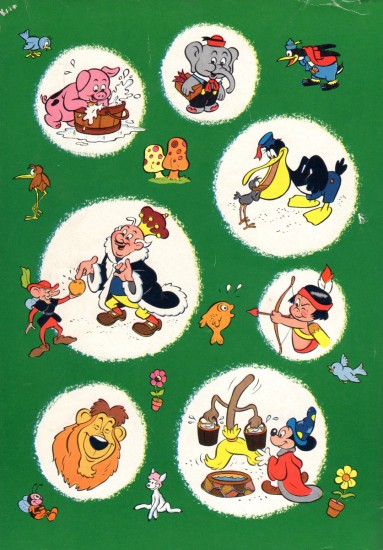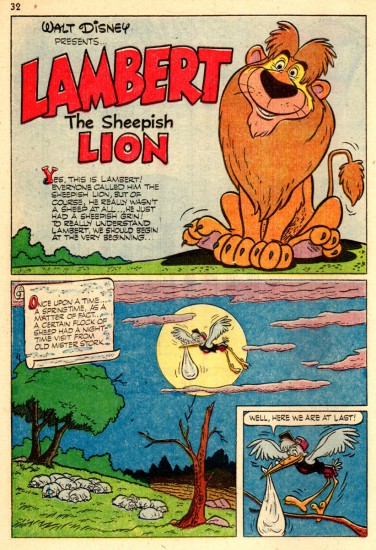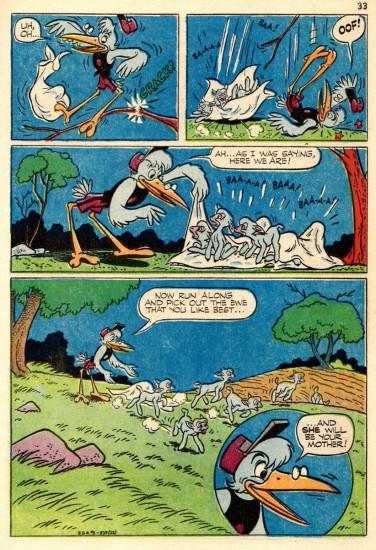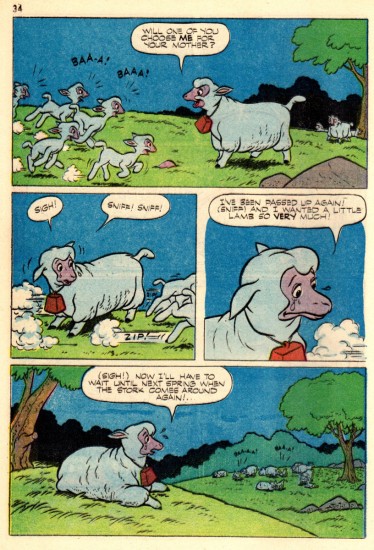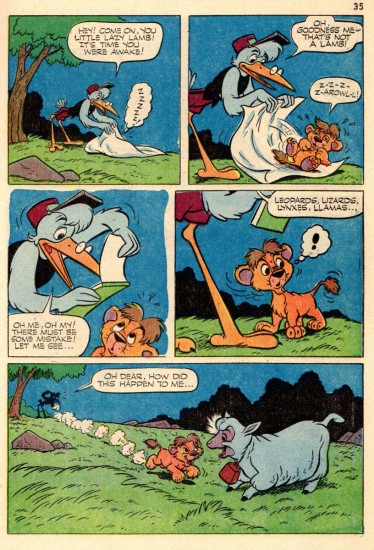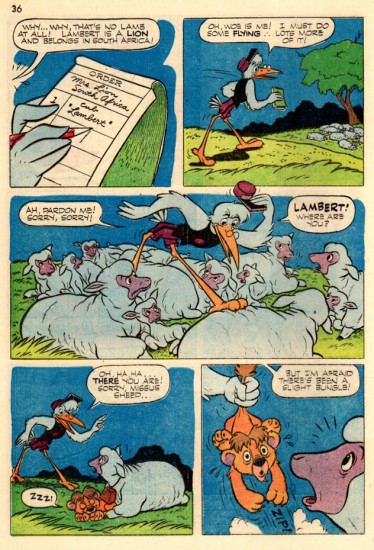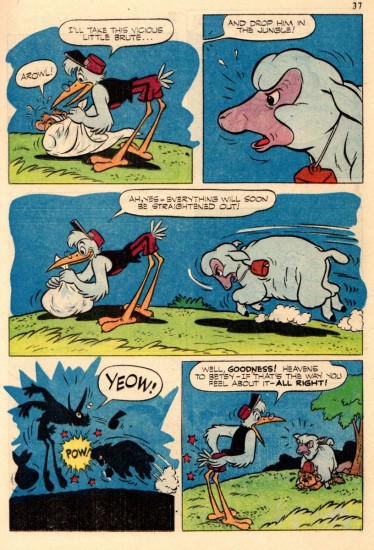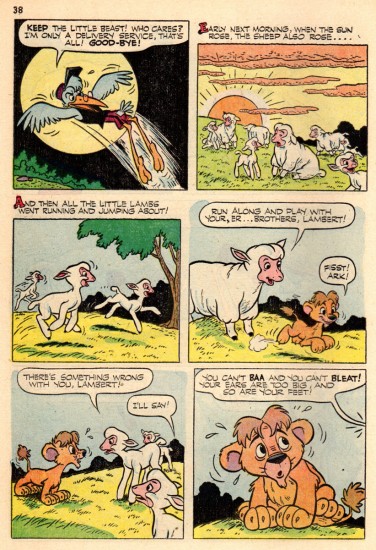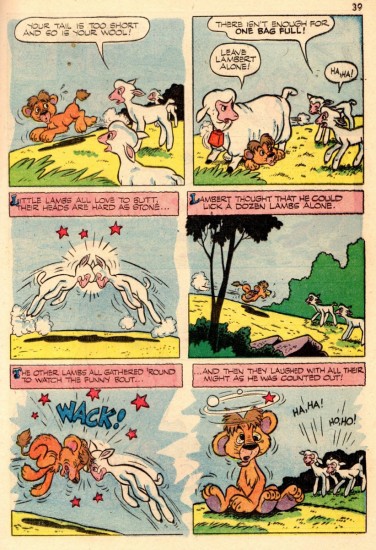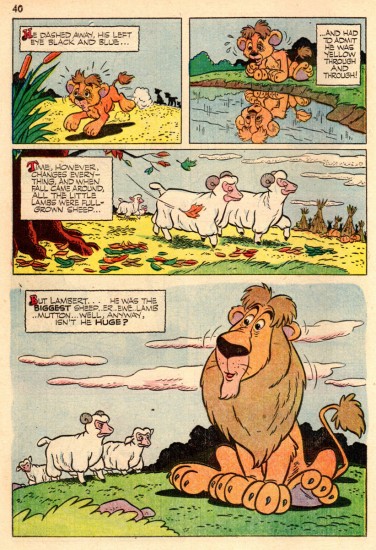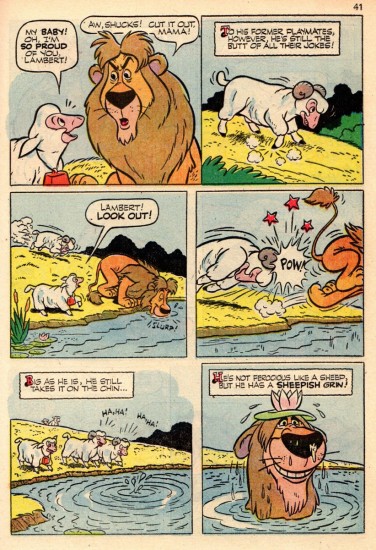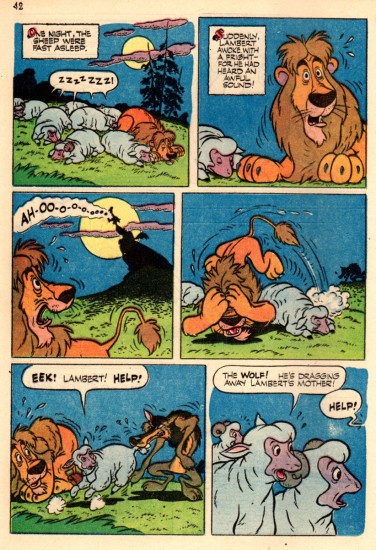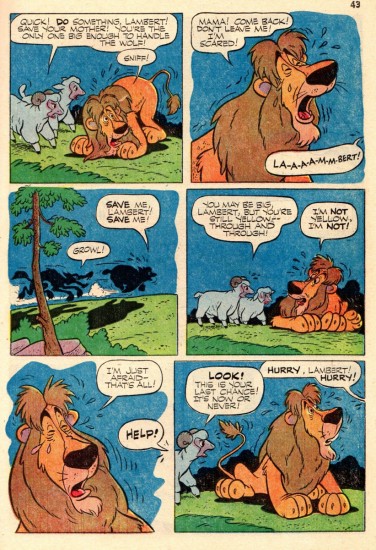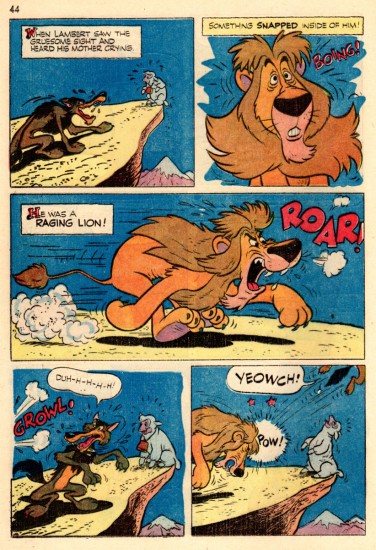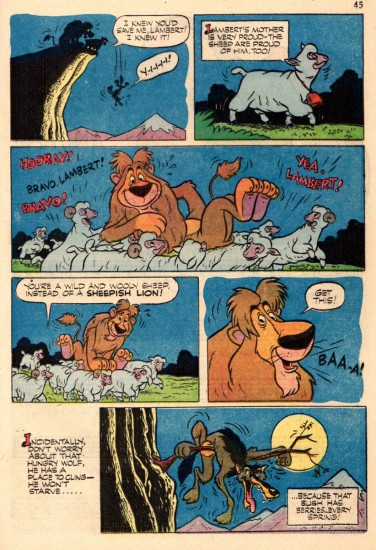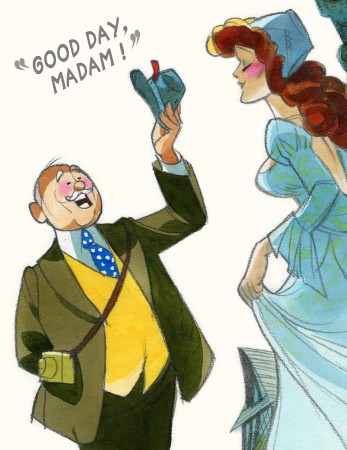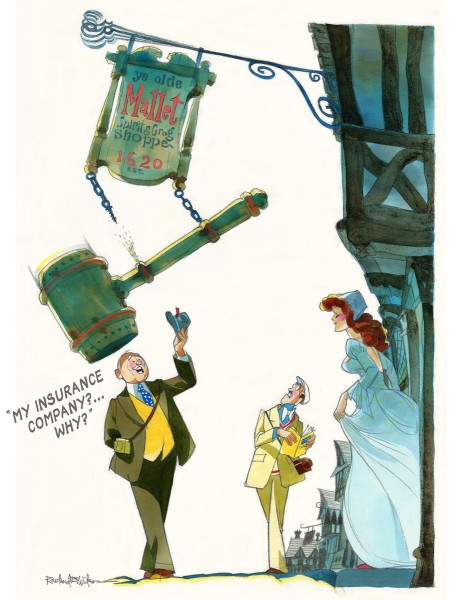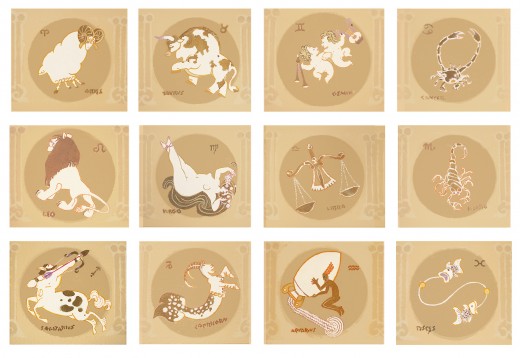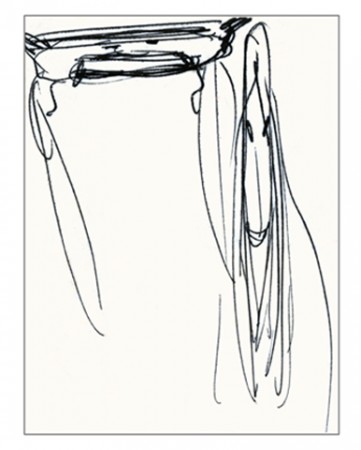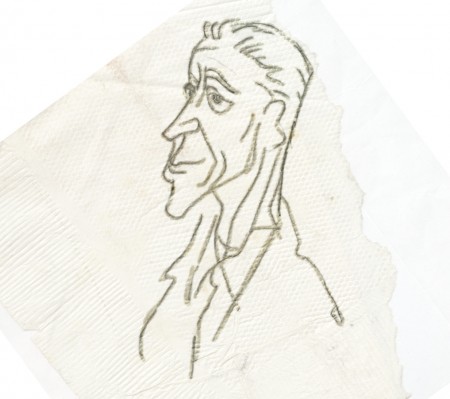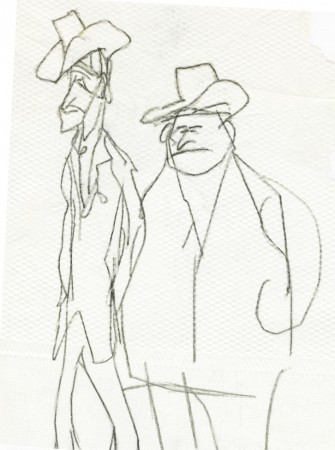Category ArchiveBooks
Books 17 Dec 2012 08:18 am
Heath Book – 3
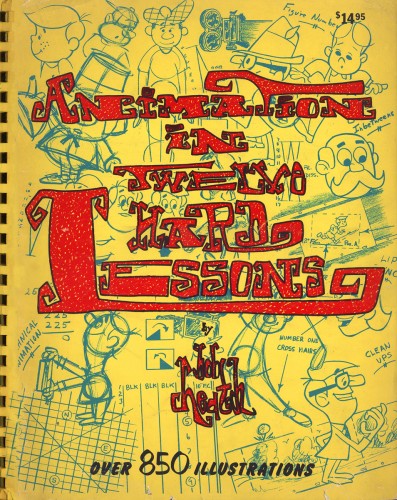 - When I was younger, animation books were hard to come by. There were books like The Art of Walt Disney by Robert Field or The Art of Animation by Bob Thomas, a couple of books by John Halas, or the Preston Blair Animation book. Some of these were readily available and not too expensive (I bought the Preston Blair book for $1.99 – list price) others were considered rare books and were not only expensive but hard to find.
- When I was younger, animation books were hard to come by. There were books like The Art of Walt Disney by Robert Field or The Art of Animation by Bob Thomas, a couple of books by John Halas, or the Preston Blair Animation book. Some of these were readily available and not too expensive (I bought the Preston Blair book for $1.99 – list price) others were considered rare books and were not only expensive but hard to find.
One book that was advertised in the back of magazines that were about film and/or animation was the Robert Heath/Tony Creazzo book Animation in Twelve Hard Lessons. For some reason, over many years, I never bought a copy for myself. As a matter of fact, I never actually even saw a copy at arm’s length. It was always not there.
Now, I’m spending some time at Buzzco, Candy Kugel’s studio. Lo and Behold, there was a copy of the book, and I finally got a chance to go through it. In fact, I’ve decided to post it on line and have found it to be pretty good. It starts out on the most basic level but gets more and more professional. Today’s post is about exposure sheets and planning for the camera. There’s a lot of information there. Much of it isn’t used in quite the same way it once was, but believe me knowledge of this goes a long and far way toward helping to make the film making process more solid and professional.
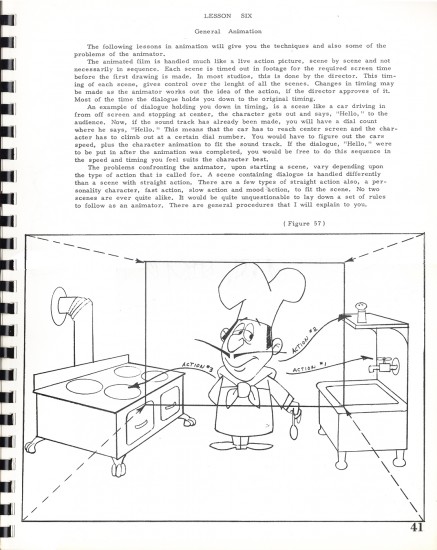 41
41
I was not quite sure whether to continue today’s post or to stop here cutting off the next lesson until next time. The material upcoming is so dense in its technology (however dated, given that most of us are using computers these days) that I was confident most readers would just zip past that material. However I decided to include it today. I didn’t see the need to stretch the book out, and I thought the dedicated will stay with it.
There’s a ripe history there among the Oxberries and the optical printers. I’m sure back in the day of the classical animator, most of them probably didn’t know what the equipment actually was or what it did. The animator was involved with the line and the movement, the background person focused on the color planes they created. Who cared what they shot it on or how they did a dissolve. Of course, then there were the people like me who not only wanted to know how these machines worked but wanted to do it themselves. In fact, that was the case. For the first few years I shot my own animation on an animation stand I built out of an old WWII device used for creating ID cards. The only part that came from the Oxberry factory was the platen; I was too concerned about it being the proper kind of glass and the weight of the springs being just right. I eventually moved up to a rented Oxberry stand and would should overnight, and finally, I considered myself something of a success when I was able to hire a camera crew to actually film the material for me.
For the geeks out there who were like me, here’s the next chapter.
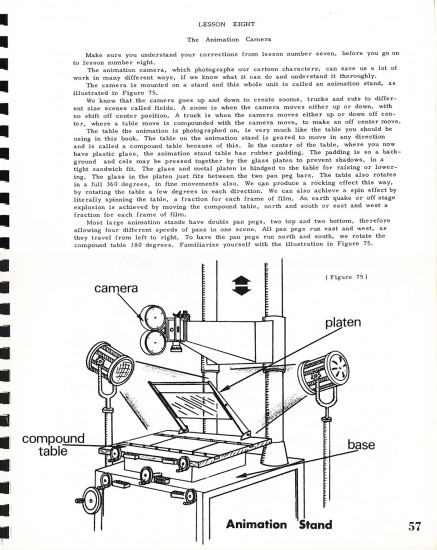 57
57
Articles on Animation &Books &Chuck Jones &Independent Animation 15 Dec 2012 07:18 am
Moviesmoviesmovies
- Turn around, and it’s the weekend again. I guess that’s a good thing. But Christmas seems to be coming so quickly these days. It was only yesterday that I was complaining that they were pushing Christmas on us so soon after Thanksgiving. Christmas carols when we had hardly finished eating the turkey! Maybe they were right.
As we get closer to Christmas there are fewer and fewer Academy events. Things were mellowing out already this past week. I was so happy to not have had a dinner or a lunch or a screening to attend last Sunday. I stayed home and was quiet while the weather, outside, was pretty lousy. One of those days where the rain is light enough that you feel stupid opening an umbrella, but the wind and the temperature made it so bitter out that it was great to be indoors – anywhere.
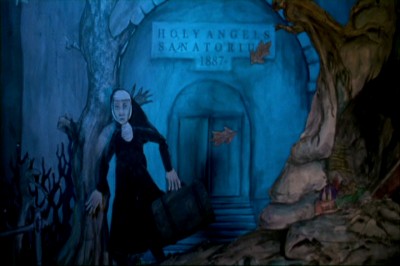 On Monday, I’d picked up a DVD for the animated feature, Consuming Spirits, at the Film Forum theater. The film should be seen on a big screen. It was shot in 16mm and looked pretty darn good in DVD. The story is complex, so I’m sure watching it focused in a theater would be better for the film. However, I loved it, just the same, and my review in the Splog on Tuesday was a foreshadowing of some of the reviews that appeared in the NY papers on Wednesday when it officially opened. This movie will be playing through Christmas Day; treat yourself.
On Monday, I’d picked up a DVD for the animated feature, Consuming Spirits, at the Film Forum theater. The film should be seen on a big screen. It was shot in 16mm and looked pretty darn good in DVD. The story is complex, so I’m sure watching it focused in a theater would be better for the film. However, I loved it, just the same, and my review in the Splog on Tuesday was a foreshadowing of some of the reviews that appeared in the NY papers on Wednesday when it officially opened. This movie will be playing through Christmas Day; treat yourself.
It’s very positive that A.O.Scott in the NYTimes chose his top ten flms of the year. As usual he adds another five or six which he call his “honorable mention” list of films that came close to being in his top ten. Consuming Spirits was one of these “honorable mention” movies that take on a nice prominence.Mind you that I don’t always agree with Mr.Scott (e.g. my favorite movie of the year is not to be found on his list), but I do take pleasure when I see such a deserving, small film get the attention it deserves.
Read A.O. Scott‘s review for the NYTimes here.
Read the 3 star review by Farran Smith Nehme for the NYPOST here.
On Tuesday there was a luncheon at the Four Seasons for Les Mis̩rables. Some of the cast РAnne Hathaway, Hugh Jackman, Eddie Redmayne, Amanda Seyfried and Samantha Barks were all there. We entered a different room this time; this one had a piano bar playing. Uh oh.
During the meal, director Tom Hooper announced that, even though they’d had a late night the night before – there was a lot of drinking, I guess, at the premiere – the cast was itching to sing for us. Samantha Banke, who did a lot of musical theater in England,sang “Summertimne”. This was an odd choice given the temperature outside, but she did a great job. Hugh Jackman then sang a song to his wife which was a love letter to her. Anne Hathaway followed singing a Christmas carol with Eddie Redmayne, Amanda Seyfried and Hugh Jackman doing backup. Coffee was served and the lunch ended quickly. Tom Hooper didn’t even recite a poem, but he did take photos of the crowd with his cel phone.
On Thursday I went to an Academy screening of The Hobbit. If it resembled any of the Lord of the Rings movies (with endless battles going on among millions of computerized creatures) I was prepared to walk out. The film felt as though it had been written by one of those geeks you meet at Comic Con. Completely amateurish dialogue with cliché following cliché while all this good stuff passed on screen visually. The near-three hour length was exhausting. The score is great and Ian McKellan is a blessing.
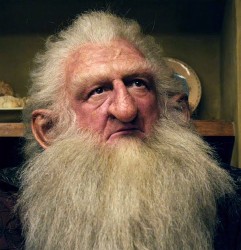 The film was shot at 48 frs per sec (and projected back at the same rate) which created a sharper more defined focus, closer in look to hi def video than film. There was one character, covered in hair, who I found extraordinary to watch without my 3D glasses. The focus on his skin was amazing, and I spent a lot of the first hour searching for shots of him without my glasses on. I later learned the character’s name, Balin. I hate to say it, but that was really the height of the film for me.
The film was shot at 48 frs per sec (and projected back at the same rate) which created a sharper more defined focus, closer in look to hi def video than film. There was one character, covered in hair, who I found extraordinary to watch without my 3D glasses. The focus on his skin was amazing, and I spent a lot of the first hour searching for shots of him without my glasses on. I later learned the character’s name, Balin. I hate to say it, but that was really the height of the film for me.
I also have to agree that the animation of the gollum was quite amazing. Not as good as the tiger in Pi, but worth the cost of admission for an animator. If Andy Serkis has anything to do with it, I applaud him.
On Friday night I followed up an ad in Variety that indicated a screening in town of the
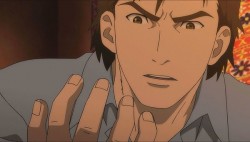 Japanese animated feature, The Mystical Laws, was showing for Academy members. In the end, I couldn’t go; work finally got in the way.
Japanese animated feature, The Mystical Laws, was showing for Academy members. In the end, I couldn’t go; work finally got in the way.
I still want to see Goro Myazaki‘s film From Up on Poppy Hill. I know that Bill Plympton hated it, but he and I often disagree on movies. The film won the Japanese equivalent of the Oscar, and it did enormously well in Japan. Somebody liked it; there’s got to be something good there. I’m going to keep my eyes open for it; usually GKids ‘ distributing it means there will be a chance of its eventually playing.
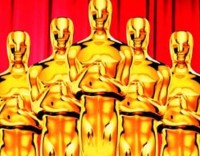 Today, Saturday, the Academy has its screening of animated and live action shorts. The short-list (ten animated and ten live-action) will screen so we can narrow the selection down to five films for each category. I can select the animated films from my home since I saw them all and remember the ones
Today, Saturday, the Academy has its screening of animated and live action shorts. The short-list (ten animated and ten live-action) will screen so we can narrow the selection down to five films for each category. I can select the animated films from my home since I saw them all and remember the ones
I like. However, I haven’t seen the live action shorts and want to vote for them. So we start with animated films at 10am, live-action at noon, and we continue through till about four or five. There’s a lunch at 1pm. A long day of movies. Looking forward to it.
To add a bit of punch to this post, I’m placing an article Chuck Jones wrote in 1965 for an ASIFA International bulletin just prior to one of the early Annecy Animation Festivals.
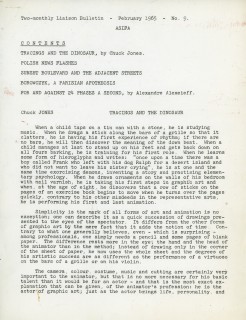 1
1 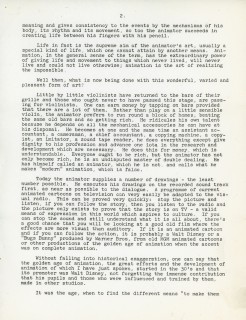 2
2(Click any image to enlarge.)
Bill Peckmann &Books &Illustration 14 Dec 2012 07:39 am
Teddy’s Weihnachten
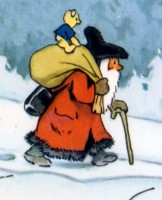 - There are times when I wish I had a political blog so that I could vent some of the political venom that builds up in my little world.
- There are times when I wish I had a political blog so that I could vent some of the political venom that builds up in my little world.
Fortunately, my first love is animation, and I maintain steadfastly an animation and cartooning blog. And believe me, one blog’s enough.
Given that, I’m proud to present this post.
- We’ve already met Fritz Baumgarten‘s characters Teddy and we’ve seen his version of Santa. In this sweet little book, Teddy gets to meet Santa. It’s another wonderful Christmas book done in the very round style of Mr. Baumgarten. That coupled with his delicate and limited color palette.
Teddy’s Weihnachten.
This book comes from Bill Peckmann. Many thanks to him. His one short comment is:
- Here is our second German Christmas card (book) from Fritz Baumgarten. (Man, can he do birds, or what!)
I hope you enjoy it.
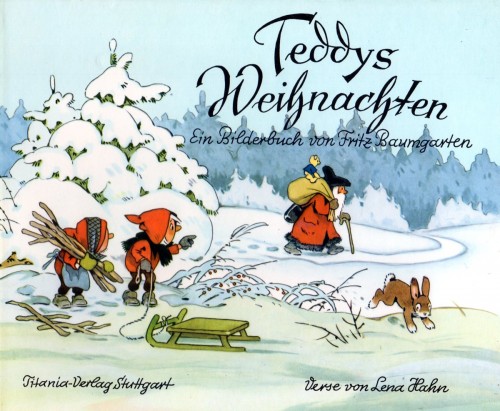
Book’s cover
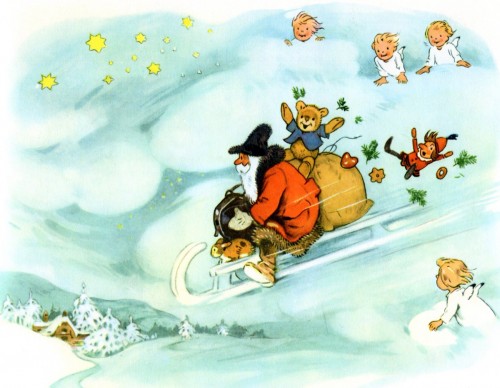 6
6
You’ve got to love this picture !
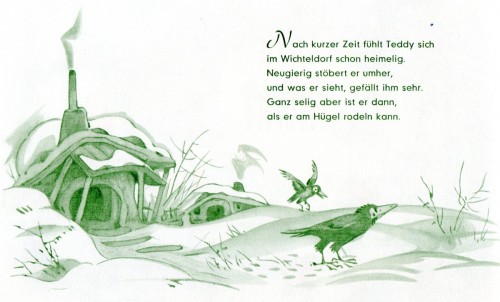 17
17
Beautiful poses on those birds.
The End
.
And a last note comment with an additional page from Bill Peckmann:
“In keeping with the Spirits (hic!) of Christmas past, a peek of a future post…”
Animation &Books &Daily post 10 Dec 2012 06:58 am
Heath Book – 2
 - Last week I posted the first twenty pages of the Heath book, Animation in 12 Hard Lessons.
- Last week I posted the first twenty pages of the Heath book, Animation in 12 Hard Lessons.
As I mentioned back then, this book was always for sale in the back of animation magazines and film articles about animation. Not only did they sell the book by Bob Heath and Tony Creazzo, but they offered a lot of equipment, somewhat similar to Cartoon Colour. Paper, cel vinyl and portable drawing tables were all available through Heath.
I never really had the chance top go through the book, though I always had a curiosity about it. I had come across Tony Crazzo’s work. He was the assistant to Vinnie Bell, one of my favorite animators on the East Coast. I have to say, I loved his work on the Letterman series that I coordinated for the Hubley studio. I never did get to meet, or even speak with him though. Vinnie used to bring in his own work, already beautifully assisted in a strong and juicy line.
So here at Buzzco is a copy of the book. I can’t help but share the piece with you, knowing that it’s not for sale on the market anymore. At least I haven’t seen it out there in quite some time.
Here’s part 2:
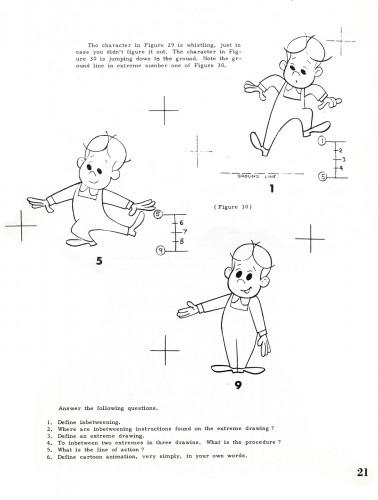 21
21
Bill Peckmann &Books &Illustration 07 Dec 2012 06:52 am
Raymond Briggs’ Father Christmas
In 1973 Raymond Briggs did this eccentric telling of Father Christmas, treating him as you would a real person. The book is funny, and John Coates followed up his adaptation of Briggs’ Snowman book into animation by doing this book as a video. It was almost as successful as The Snowman, though not quite. It relied on a different form of humor.
The film, Father Christmas, was released in 1997 and was nicely directed by Dave Unwin with a tour de force performance by Mel Smith as Father Christmas. However, watch out for later versions that use William Dennis Hunt as the VO character, they’ve taken all the purposeful darkness out of the character and have sanitized it to within an inch of its life.
However, the original Raymond Briggs book still exists, and that’s what Bill Peckmann has forwarded onto me, and I present it happily.
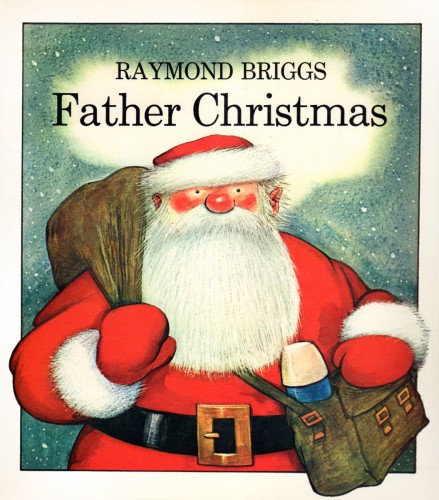 1
1
As a follow-up here’s a piece Bill found about Raymond Briggs:
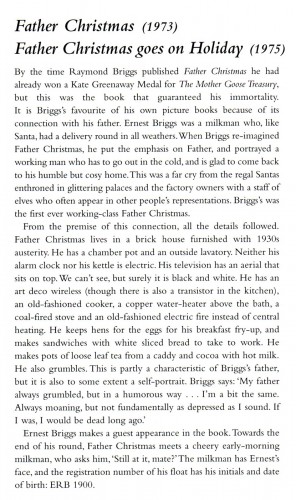 2
2
(Click any image to enlarge.)
Action Analysis &Animation &Books &Commentary 06 Dec 2012 07:03 am
The McKimson Brothers
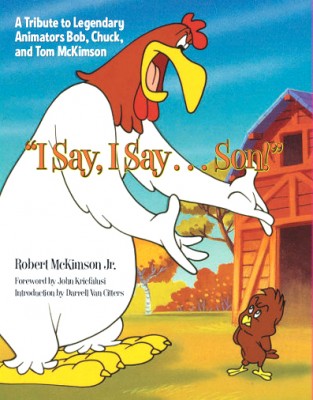 I Say, I Say . . . Son! This is the title of a book by Robert McKimson Jr. Any ideas what it might be about?
I Say, I Say . . . Son! This is the title of a book by Robert McKimson Jr. Any ideas what it might be about?
Sound anything like Foghorn Leghorn?
Yes, it’s a tribute to Bob McKimson with a big nod to Chuck and Tom McKimson, as well. This, to me, is something of a feat in its own right. The book is a workhorse of a picture book with lots of valuable images that you haven’t seen before. It’s not like the big glamour picture books that come out of Disney or Dreamworks. The Art of Whatever. It’s not one of those heavyweight oversized books that cause coffee table legs to bowl outward under their weight. No, this is a go to book on good paper; it’s solid. There are lots of drawings and photographs, frame grabs, newspaper clippings, and posters. Just looking at the pictures will give you a pretty good idea of the story the book is telling.
And it’s a valuable story – the part of the jigsaw puzzle that’s been left missing.
There have been about a half dozen books by and about Chuck Jones, one enormously expensive tome on Friz Freleng with lots of key references to him in most animation histories. Bob Clampett did a lot to promote himself; he gave us films and videos, not books. There are at least three Tex Avery books. This is the first on Robert McKimson – the other Warner’s director. And it was written by his son.
McKimson was loved by Leon Schlesinger who tried to make him a director early on. Yet, Bob didn’t feel that he was ready. He became the head of all animators in the studio, responsible for solidifying the style of all the different variations of the characters. He helped tie Jones’ Bugs Bunny to Freleng’s or Clampett’s Porky Pig to Tashlin’s. When Schlesinger sold the studio in 1944 and Eddie Selzer took charge, McKimson pushed himself into the directorial position, and he gave us meat and potatoes films with characters that were all his: Foghorn Leghorn, the Tasmanian Devil, Sylvester Jr., and some of the Speedy Gonzales work.
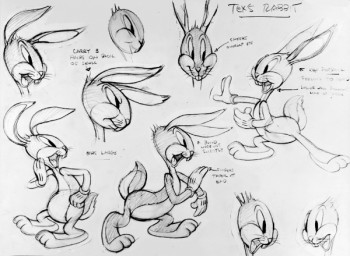 Before reading this book I was certainly well aware of Bob McKimson‘s work, and I was not quite as familiar with the other McKimson brothers. I’m not sure much has changed about that. As an animator Bob McKimson was brilliant, but as a director I never quite saw the lyricism that we saw in some of his best animation. McKimson was the Milt Kahl of the WB studios. He could draw like dynamite and knew every trick in the
Before reading this book I was certainly well aware of Bob McKimson‘s work, and I was not quite as familiar with the other McKimson brothers. I’m not sure much has changed about that. As an animator Bob McKimson was brilliant, but as a director I never quite saw the lyricism that we saw in some of his best animation. McKimson was the Milt Kahl of the WB studios. He could draw like dynamite and knew every trick in the 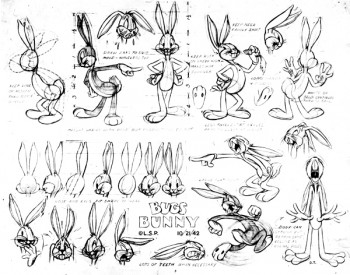 service of giving the tightest, sharpest animation possible. When you look at his scenes you’ll see beautifully drawn animation with solid timing and a muscular approach. Go to an extreme and take the pose as far as you can, and then go farther still, and then go even farther still. Bob not only did that, but his brilliant draftsmanship held the characters together in those unrelenting poses. It was near miraculous how _____2 of many Bugs model sheets drawn by Bob McKimson
service of giving the tightest, sharpest animation possible. When you look at his scenes you’ll see beautifully drawn animation with solid timing and a muscular approach. Go to an extreme and take the pose as far as you can, and then go farther still, and then go even farther still. Bob not only did that, but his brilliant draftsmanship held the characters together in those unrelenting poses. It was near miraculous how _____2 of many Bugs model sheets drawn by Bob McKimson
he pulled that off. Animators
like Rod Scribner or Jim Tyer would go as far as he did, but their drawings blew up into funny. Bob’s artwork just got more solid. Bobe Cannon was probably the only other person at WB that could match him for drawing ability. Even still Cannon would purposefully distort his drawings more than McKimson would. Bobe was interested in the 20th Century Art, Bob was interested in the artistry.
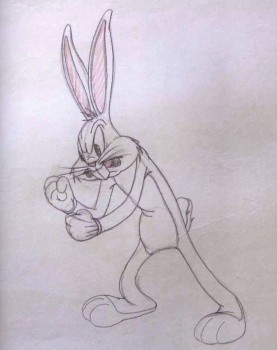 As may be obvious, I’m not the greatest enthusiast when it comes to Bob’s direction. It all shows so little panache that I must say I’ve easily dismissed it. The work is just that, a solid bit of work. The backgrounds are cartoon realistic. No flair the way you’d find in Maurice Noble‘s art, no personality as in Paul Julian‘s paintings. Dick Thomas, Cornett Wood and Robert Gribbroek did most of the design and background painting. All of the effort was put into the animation and little concentration seemed to focus on the design of the films. I can remember Mike Barrier talking about McKimson’s work. His layouts and the stacks of animation drawings that came from his cartoons far outweighed the piles of art from work by the other directors. Jones’ impeccable poses, Freleng’s exquisite timing. McKimson worked the funny into his cartoons and he got the same from his animators. He used drawings and more drawings. The style came from good, hard solid work, not timing or poetry.
As may be obvious, I’m not the greatest enthusiast when it comes to Bob’s direction. It all shows so little panache that I must say I’ve easily dismissed it. The work is just that, a solid bit of work. The backgrounds are cartoon realistic. No flair the way you’d find in Maurice Noble‘s art, no personality as in Paul Julian‘s paintings. Dick Thomas, Cornett Wood and Robert Gribbroek did most of the design and background painting. All of the effort was put into the animation and little concentration seemed to focus on the design of the films. I can remember Mike Barrier talking about McKimson’s work. His layouts and the stacks of animation drawings that came from his cartoons far outweighed the piles of art from work by the other directors. Jones’ impeccable poses, Freleng’s exquisite timing. McKimson worked the funny into his cartoons and he got the same from his animators. He used drawings and more drawings. The style came from good, hard solid work, not timing or poetry.
There are all those stories about Rod Scribner and his wildly artistic period under Clampett. He was a different guy under McKimson. It’s hard to see the same animator in the two different phases. There’s pure delight in the animation under Clampett and solid workmanlike craft under McKimson. No doubt this was also because Clampett probably was off leaving Scribner on his own to do what he wanted. McKimson kept Scribner under his thumb and, in my opinion, didn’t get that great and wild personality that had been available. As a matter of fact, I suspect this was true of all the artists McKimson controlled. It probably worked well with the two brothers, Chuck working under Bob’s direction, but I’m not convinced it was the best way for most artists to work.
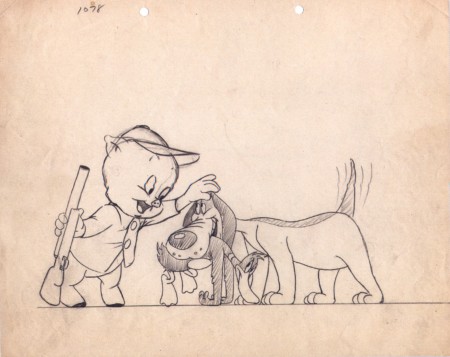
A Bob McKimson Layout for “daffy Duck Hunt” (1949)
For this book, there can be no doubt that a major source of information had to have been Mike Barrier‘s excellent interview with McKimson. (Go here if you want to read that – and you should have already read it.***) I’m afraid there is no interview with Tom or Chuck McKimson readily available. I would have liked to see more of them in this book. Toward the end of the book, we see roughs and stills from the illustration work the two have done for comics and coloring books. Robert McKimson certainly dominates the bulk of this volume.
It is the visual materials available here that shows the real value of the book and makes it important to own. For anyone who recognizes the importance of WB cartoons and wants the whole picture recognized this is the reason for this book. The artwork. There are some beautiful early drawings printed, especially, the pages of clean-roughs done by Bob that were animated by Tom. Excellent poses once again from Bob with no sign of Chuck’s drawing. Again, it’s only toward the end, when we get into the comic books and other print material, that we see some of Chuck and Tom’s artwork. These are definitely not up to that of Bob’s drawing, but if the focus is to be on all three, we need to see all three on display.
I appreciated the photos throughout as well as a reprint of the few articles about any and all of the brothers. Perhaps more of an analsis from the author about the variance from one artist to another. Despite their being brothers, they do have very different talents and we can see, despite the limited amount of art from Tom & Chuck, that Bob was the obviously the strongest draftsman of the three, but there for the lack of drawings goes this book.
Regardless, I’m glad to have what I do have. The excellent WB art of Bob McKimson and the familiar comic book covers of Tom. Both broght back memories of differing kinds. Chuck, he was the animator, he worked within his brother’s unit at WB, and there isn’t much sign of his drawing. But the films are there, and we can enjoy those films and the talent that went onto their making. I wonder if ever there were a conversation or a statement by Bob about his brothers’ work. Perhaps someday, that curtain will be opened a bit more. Until then, I’m grateful for this book.
*** Actually if you want to go the heart of animation history just go through Mike Barrier‘s archives and interviews, and you’ll have a good solid base. Take a tour of MichaelBarrier.com. Spend a lot of time there.} Perhaps someday we’ll get Mike Barrier’s article about the three brothers. Maybe a review of this book will bring him out on the subject.
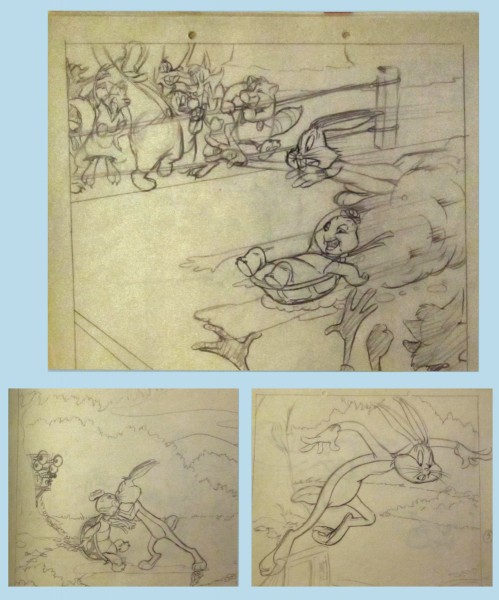
Bugs Bunny and the Tortoise
Some roughs for a 1948 book by Bob McKimson.
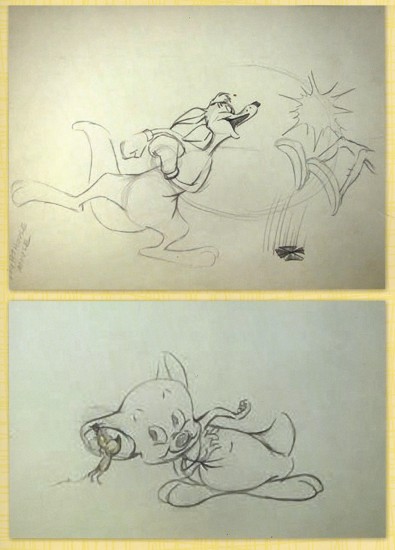
Top – Layout for “Hippity Hopper” (1949) Bob McKimson
Bot – Layout for “Lighthouse Mouse” (1955) Bob McKimson
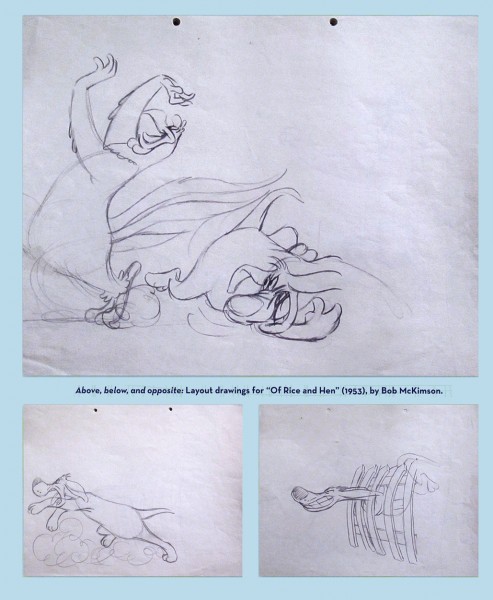
Some beautiful roughs for Layouts by Bob McKimson
for “Of Rice and Hen” (1953) directed by him.
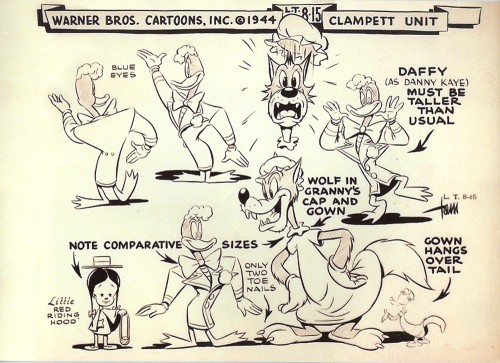
A model sheet by Tom McKimson. One of a few in the book.
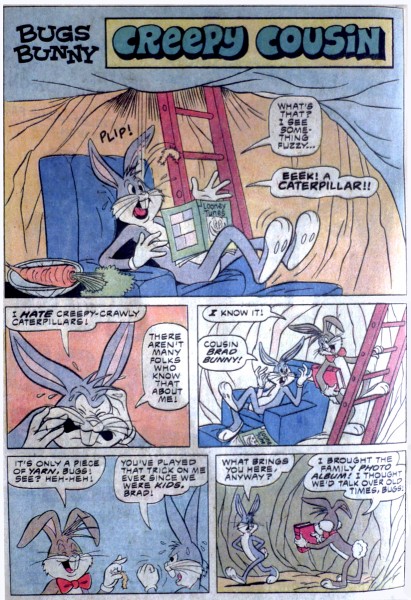
A comic book page by Tom McKimson
A very different model than Bob would have drawn.
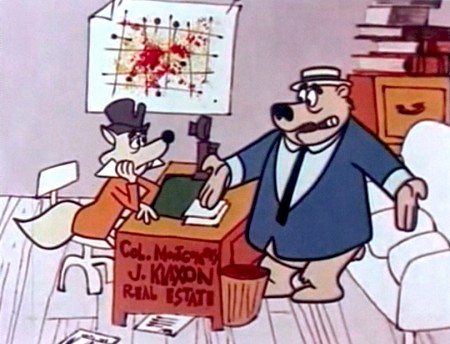
A setup from “Calvin and the Colonel” directed by Chuck McKimson (1962)
Animation &Articles on Animation &Books &commercial animation &Illustration 03 Dec 2012 07:55 am
Heath Book – 1
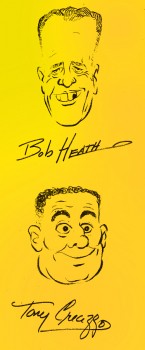 - Back in the days when animation books were a rarity and actual lessons in books were few and far between, there were Heath Books and equipment. This was a company, if I can remember correctly, which was situated in Florida. They had several books for sale, the most well known was “Animation In Twelve Hard Lessons”. It was spiral bound book and over-sized like the Preston Blair book, it contained detailed instruction on the mechanics of animation.
- Back in the days when animation books were a rarity and actual lessons in books were few and far between, there were Heath Books and equipment. This was a company, if I can remember correctly, which was situated in Florida. They had several books for sale, the most well known was “Animation In Twelve Hard Lessons”. It was spiral bound book and over-sized like the Preston Blair book, it contained detailed instruction on the mechanics of animation.
Bob Heath, I believe, was a former cameraman in animation, and his partner in writing was Tony Creazzo, a former Assistant Animator. If I remember correctly, he was closely aligned with Vinnie Bell in New York. The two were always connected; if you wanted Vinnie to animate, you also hired Tony to assist.
Well, not only did Bob Heath sell How-to books on animation, but he also sold equipment. Paper, pencils, hole punches, even an Oxberry Jr. camera stand could be bought from the company. They had an original design of a light box for sale. Lots of things that could help you set up in the animation business if you had no idea who “Cartoon Colour” was.
I’ve decidded to post this relic of a book, Here in the first chapter is Bob Heath’s “How to Animate in 12 Hard Lessons.”

Front Cover
Bill Peckmann &Books 30 Nov 2012 07:35 am
Weihmachtsfest in Wichtelland
Fritz Baumgarten has done Chrismas as well as any other illustrator out there. For the next four Fridays, beginning with today’s post, Bill Peckmann and I are presenting Christmas stories through the eyes of Mr. Baumgarten and other such great illustrators.
We start with this book, Weihmachtsfest in Wichtelland. And here to introduce this book is Mr. Peckmann:
- As a kid many years ago, if you had a favorite cartoonist, the only thing better than that was when that cartoonist did a Christmas book or story for the Holiday Season. Here is a charming Christmas confection by Fritz Baumgarten and a delicious delight it is, both the single color pages and the full color ones. Enjoy.
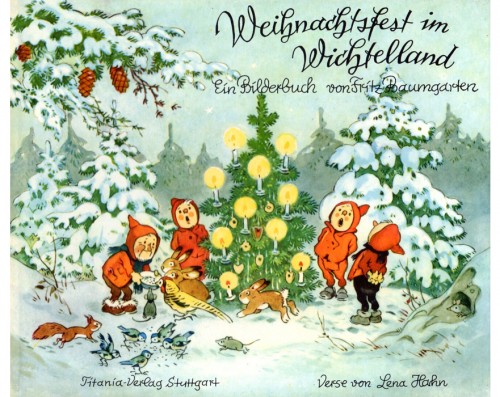
The book’s cover
.
The End
Bill Peckmann &Books &Comic Art &Disney &Illustration &Peet 20 Nov 2012 07:07 am
Moores’ “Jim Hardy” & “Lambert”
- Recently, on this Splog, we saw Dick Moores, who would eventually replace Frank King as the artist behind Gasoline Alley, as the artist behind the beautiful comic books featuring Mickey Mouse. Bill Peckmann continues with the Disney artist, Moores, as he gives us Lambert the Sheepish Lion, Bill Peet’s tale.
But first we saw an early strip drawn by Moores, “Jim Hardy”. Bill Peckmann is here to present some of the Moores history:
- When Dick Moores was assisting Chester Gould on his ‘Dick Tracy’ strip in the 1930′s, his big dream was to eventually have a daily strip of his own. In 1936, he was finally able to fulfill that wish with the comic strip ‘Jim Hardy’. It lasted from 1936 to 1942. He left ‘Jim’ to join the ranks of the Disney comic strip dept. in ’42.
- In this 1977 Hyperion Press’ book of reprints we get to read Dick’s version of how the strip came about (and what a sweet read it is) and also included are the first 21 dailies of the strip.
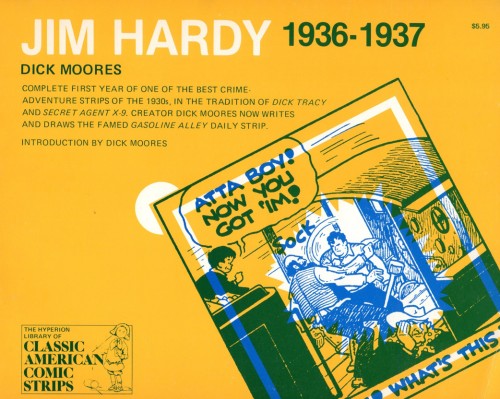
The cover page of this Hyperion Press collection of strips.
 15
15
Thanks to Germund Von Wowern we have an original ‘Jim Hardy’ strip from the early 1940′s. Beautiful ink work! (Sorry about the rubber cement stains in the word balloons, those are left over from re lettered foreign language versions of the strip.)
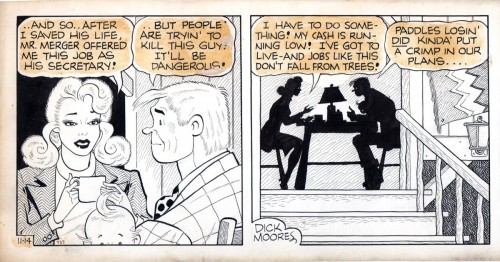 16A
16A
Here, I’ve broken the original strip into two parts
so that we can see it fully enlarged.
In this 1953 story Dick Moores had a great time adapting the Disney short ‘Lambert, the Sheepish Lion’ to the pages of a comic book. The more I look at the art, the more I start to get the feeling, that in Dick, the cartoonist, there was always an illustrator trying to get out. Some of these panels would have made pretty good page illustrations. (Which makes one wonder and dream of what a comic book page would have looked like if it had been done by the one and only Bill Peet!?!)
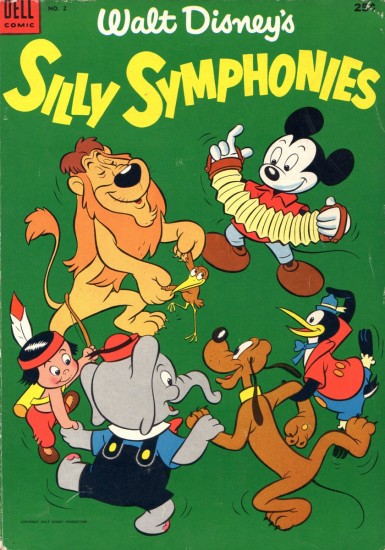
The comic book cover which contained Lambert.
In Part 2 we’ll continue celebrating the art of Dick Moores and the release of Library of American Comics’ “Dick Moores’ Gasoline Alley”!
Bill Peckmann &Books &Guest writer &Illustration &Rowland B. Wilson 12 Nov 2012 07:26 am
The Secrets Behind Trade Secrets
- Suzanne Lemieux Wilson, wife of the late Rowland B. Wilson, just sent me a guide to how she, with information from Rowland, put together their invaluable book of notes called Trade Secrets. Seeing the skeleton come together for this book is quite an informative document, and I couldn’t be happier that she trusted my blog to relay the information..
Some of these illustrations and pictures have passed across this blog before, but they take on a very new meaning here, so I’m glad to post them anew. I have to thank Suzanne for the gift of this post especially given some of the hard work I know it took to scan and send documents that are large enough to work here.
By the way, if you don’t have this book, you should. The book offers an enormous amount of information about his design for animation as well as for the printed cartoon and illustration trade. How ofen does a genius of his craft offer such a guide to the “trade secrets”? Trade Secrets is an invaluable book.
May I suggest that you click any image as you go through to enlarge them and get a better look at the illustrations and the type. It’s great stuff.
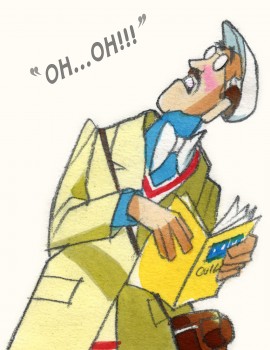 1
1
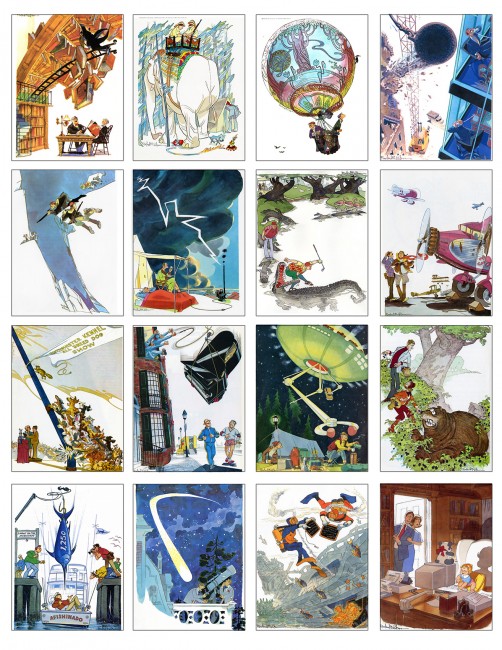 4
4
The insurance campaign ran for eighteen years–
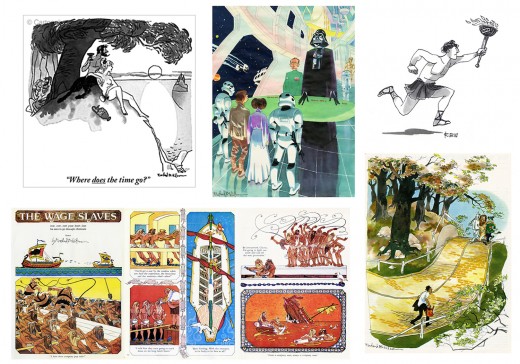 5
5
Rowland also drew cartoons for the New Yorker, Esquire,
The Saturday Evening Post, Playboy and others.
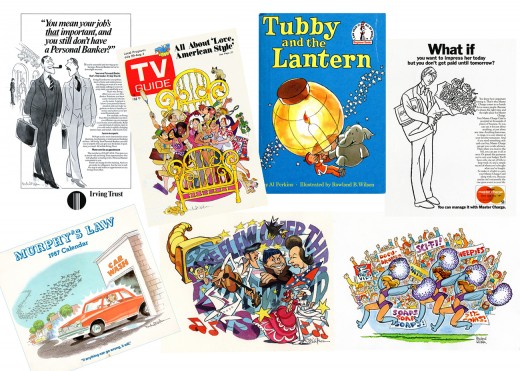 6
6
As well as illustration and advertising.
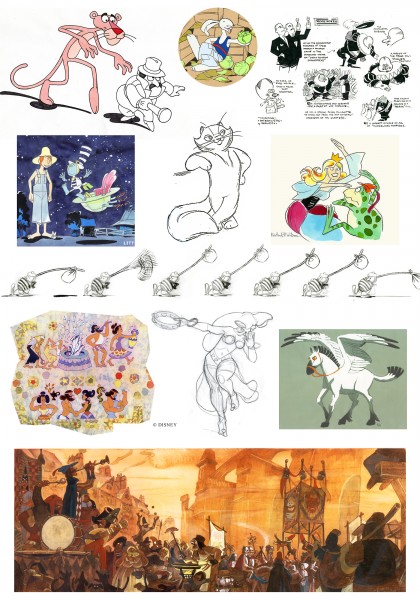 7
7
Rowland’s first and last jobs were in Animation, with many
interspersed throughout his career.
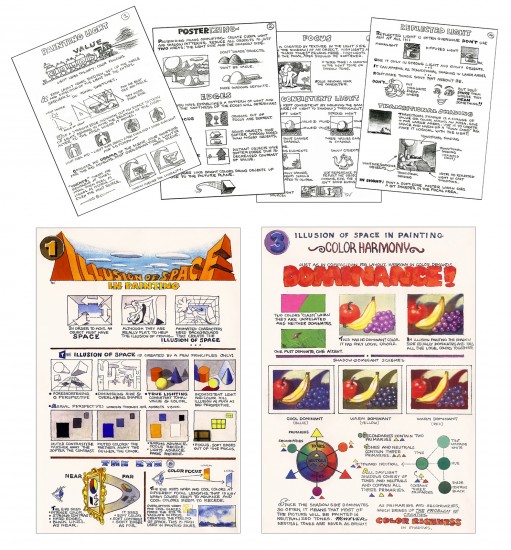 8
8
Rowland devised illustrated instruction pages as quick reference
guides for the Layout, Background and Animation staff when he worked
at Don Bluth and Walt Disney Studios.
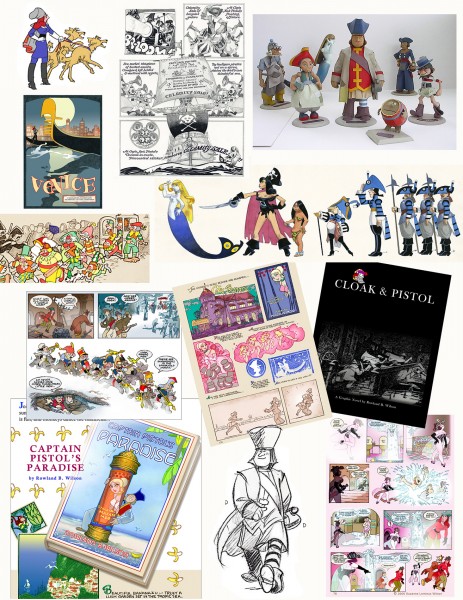 9
9
He worked on the Captain Pistol series of cartoon novels
from the 1970′s onward.
Captain Jack Pistol was a Retired Pirate and Rich Man who met with a
series of misadventures as he moved through various literary genres,
from swashbuckler to romantic comedy to spy thriller
to Western to science fiction.
Rowland sculpted three-dimensional models of the characters.
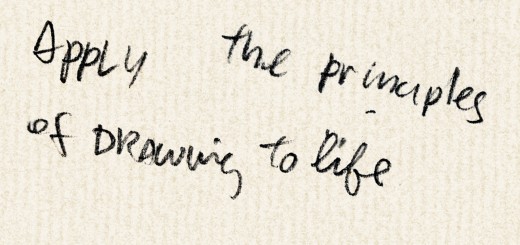
Rowland endeavored to apply the principles of drawing to life.

He created an artful environment to work and live in–
He designed and constructed a sunflower gate for the garden.
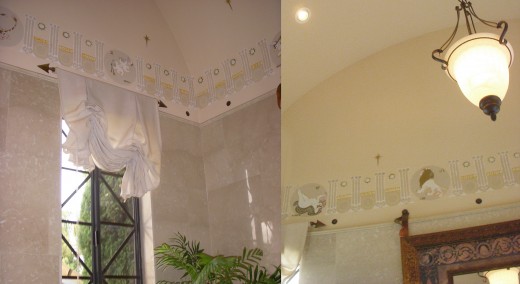
He painted the signs of the Zodiac around the base of a vaulted
ceiling…
He built a workbench for his woodworking projects and decorated it . . .
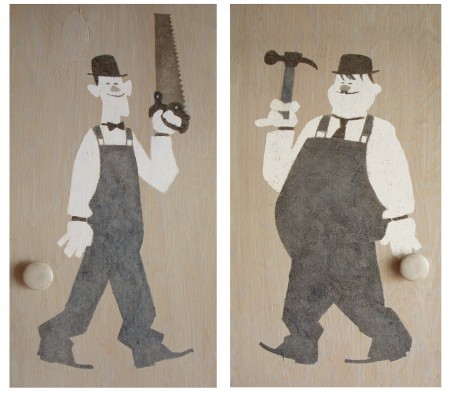 15
15
. . . with caricatures of Laurel and Hardy.
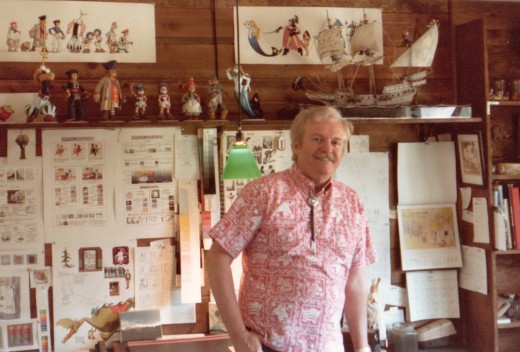
Because he worked in a variety of disciplines, Rowland sought
solutions that would apply to all of them and save him from “solving
the same problem over and over again”.
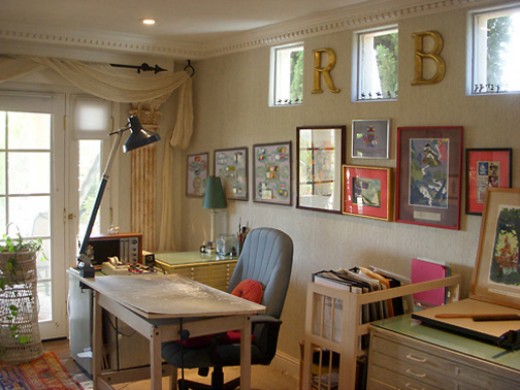
He consolidated the information into charts and hung them in his studio,
whether it was in Connecticut, New York, Ireland or California.
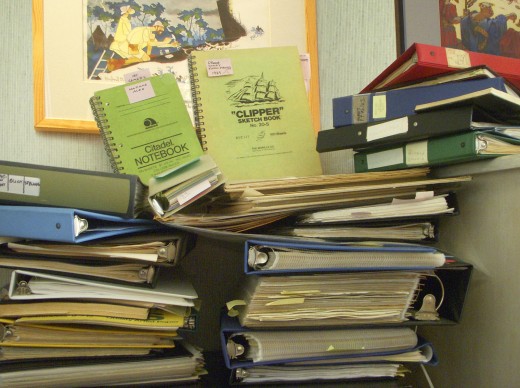
Rowland documented many techniques and observations.
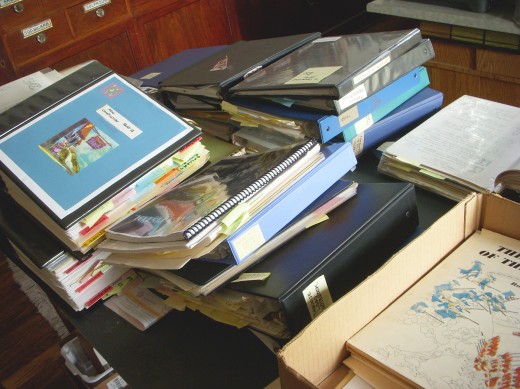
The writings and illustrations filled dozens of
notebooks, binders and sketchbooks.
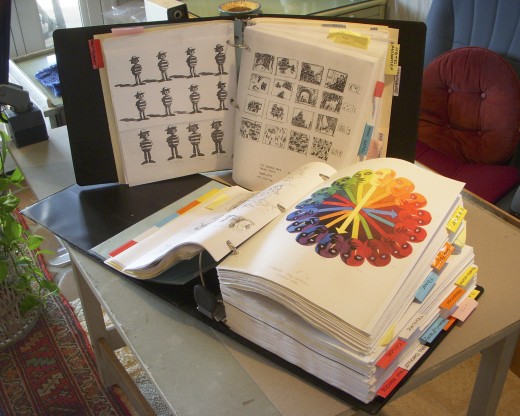
Much of it was xeroxed and consolidated into two giant binders as
resources for the book entitled Rowland B. Wilson’s Trade Secrets.
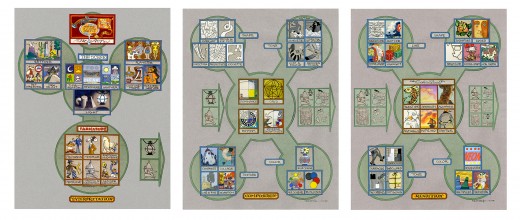
But the genesis for all of the notebooks and for Rowland’s oeuvre
were three flow charts that outlined procedures
that could be applied to any project.
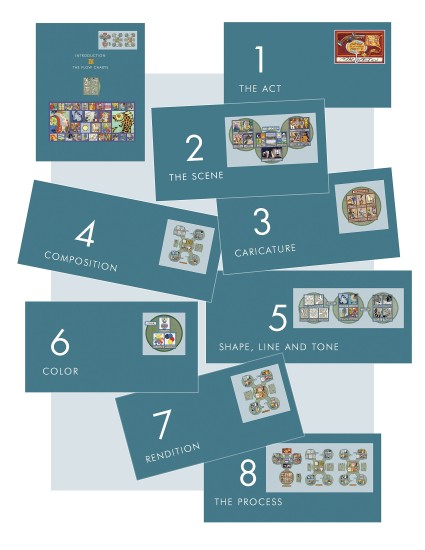 22
22
The Introduction of Rowland B. Wilson’s Trade Secrets describes the
Flow Charts in general. Then each chapter is based on an aspect
contained in them. The logo at the top right shows what aspect is
covered in the chapter.
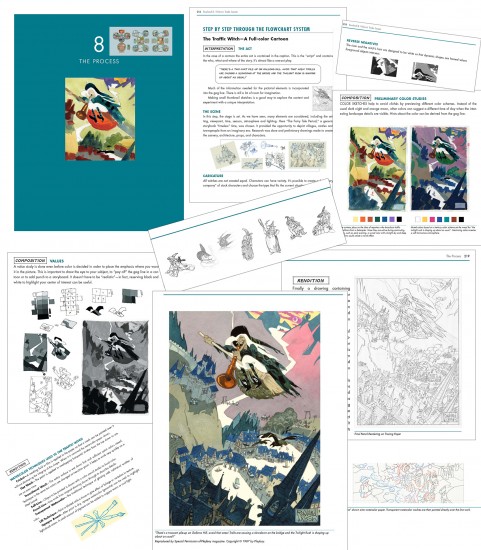 23
23
Chapter 8, the Process, follows a project from idea to finish
as it progresses along the Flow Charts.
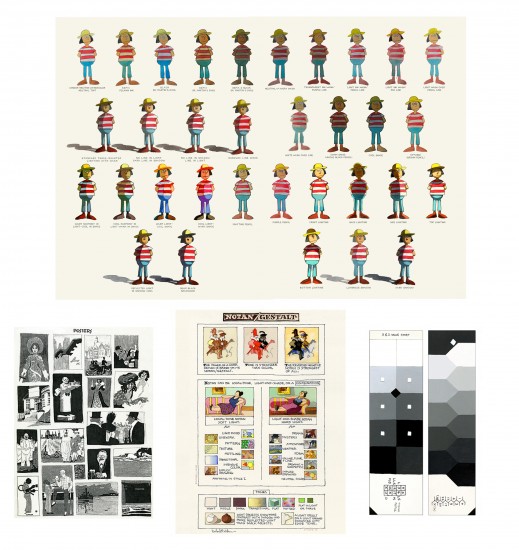
Chapter 9 presents many of the charts and posters
that actually hung on the studio walls.
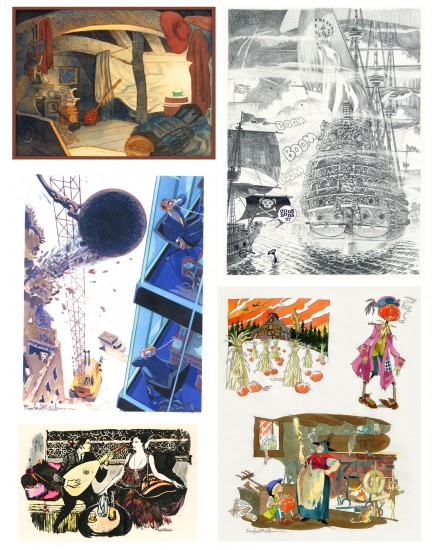 25
25
Chapter 11 shows a gallery of artwork throughout Rowland’s career,
including well-known images and some of his personal art,
never before published.
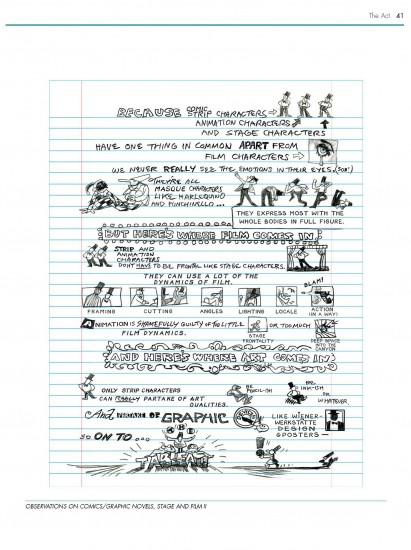 26
26
A page of observations on comics, graphic novels, stage and film:
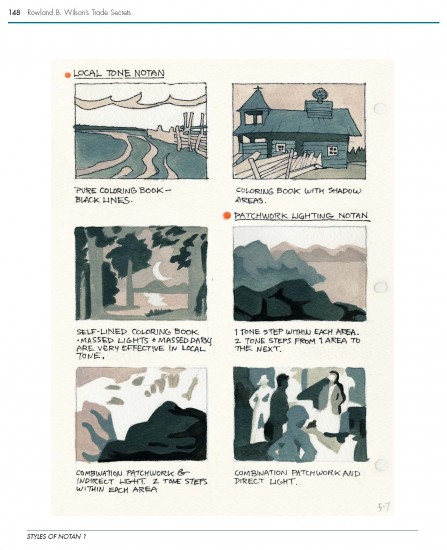 27
27
One of three pages illustrating Styles of Notan:
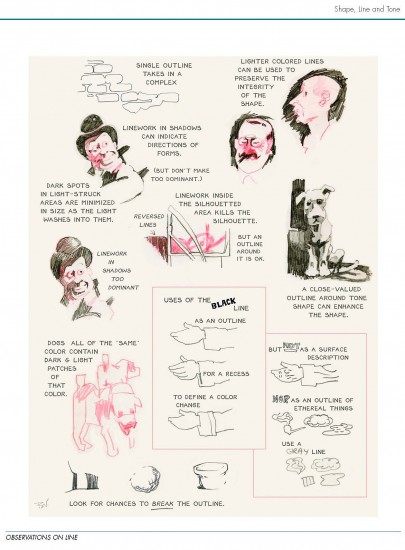 28
28
A page showing notes on various aspects of Line:
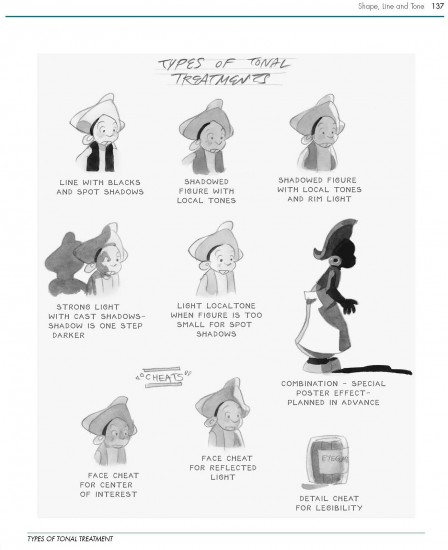 29
29
A page depicting various types of Tonal Treatments:
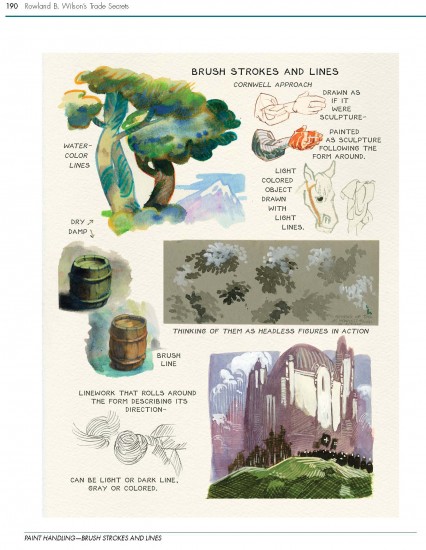 30
30
Demonstration of watercolor techniques:
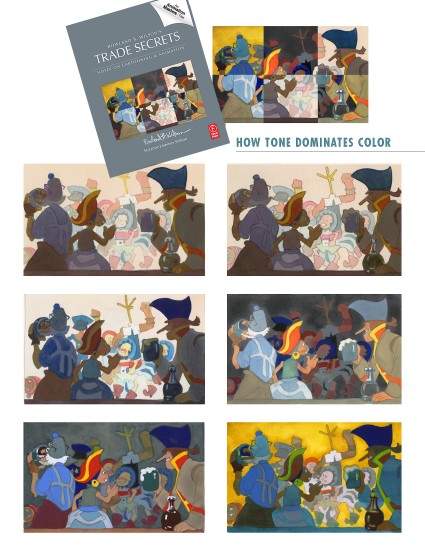 31
31
The cover image is a composite of 6 Value Studies showing the
dominance of Tone over Color:
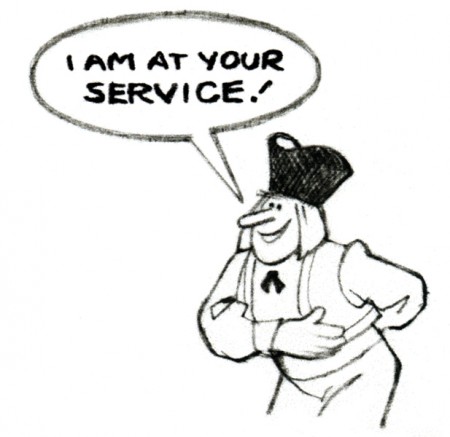
We hope you enjoy Rowland B. Wilson’s Trade Secrets and find
inspiration within.
With Special Thanks to Bill Peckmann for photograph of
Rowland B. Wilson in his studio.
_______________________
And as a bonus to this post, here are some drawings RBW did on a napkin at a lunch with Dick Williams.
Suzanne wrote:
- I discovered some vintage Rowland B. Wilson “doodles”, sketched on
napkins at Mario’s Restaurant in Westport, Connecticut–thought you
might enjoy them. The caricature of Suzanne and Rowland (image 2)
looks to me like the RBW take on Richard Williams’ drawing of us (image 3).
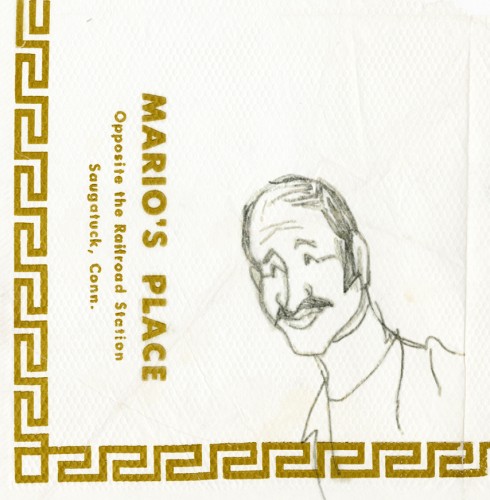 1
1Mario
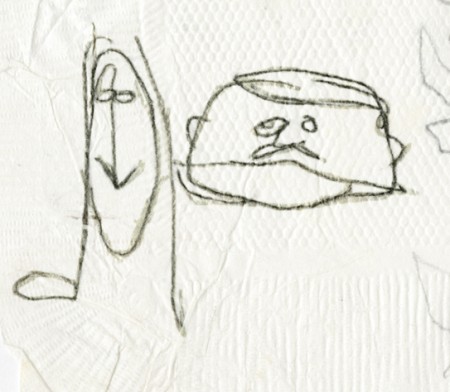 2
2
Suzanne and Rowland caricatures
